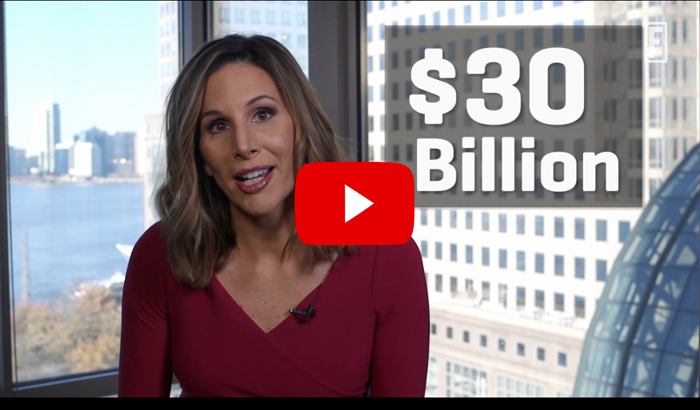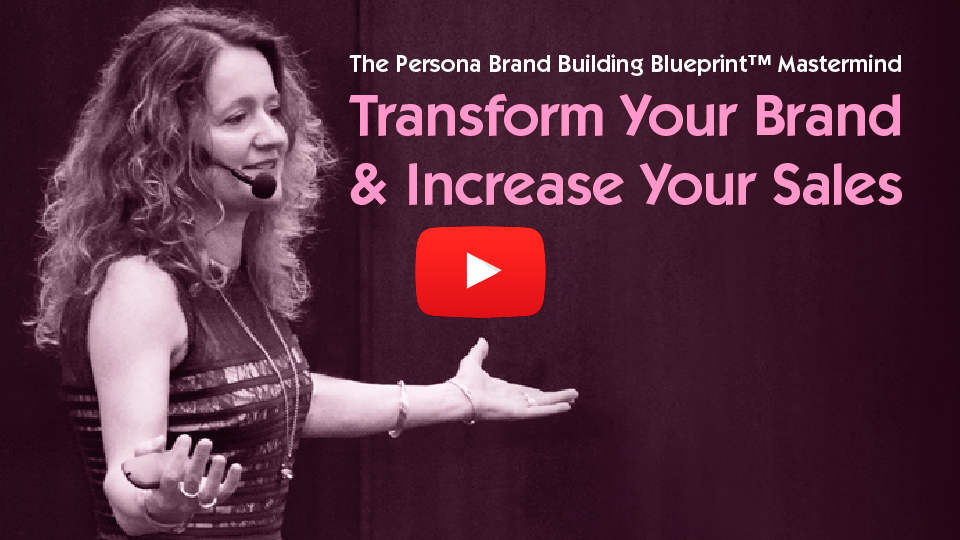Design Is NOT Branding: 10 Things Every Business Owner and Entrepreneur Should Know
/0 Comments/in Brand Profiling & Positioning, Branding /by Lorraine CarterEveryone knows that you mustn’t judge a book by its cover. Yet, the number one misunderstanding on what branding is all about typically comes from small and medium-sized businesses who often don’t understand the difference between design and branding because they don’t have access to big-brand ‘know-how’.
- Don’t confuse branding strategy with asking a designer for a new logo
- Don’t ask for a website or product packaging first, because that’s not how to build the foundations of a solid standout brand
- Without brand strategy and brand codification to provide the foundation on which the brand is built, the pretty stuff is frequently a guaranteed waste of money
It’s understandable. People can get confused about what’s branding, what’s brand identity, what’s design, and how they’re all connected.
Simply stated, your logo and packaging is part of your brand design and your brand design is part of your brand identity, but your design is not your brand, merely its visual signpost. It’s kind of like: Located at the gateway to New York City, the Statue of Liberty is an iconic symbol of America, but America is not just New York City.

Image via Public Domain Pictures
Just as Lady Liberty lights the way, your brand identity design is a signpost that must clearly point the “way” for customers. Don’t let them get lost.

Image via Pixabay
Branding vs. Designing: First Things First
Let’s talk. It’s no good buying lovely china teacups for a party when you haven’t got a table to place them on…or anybody to invite to the party.
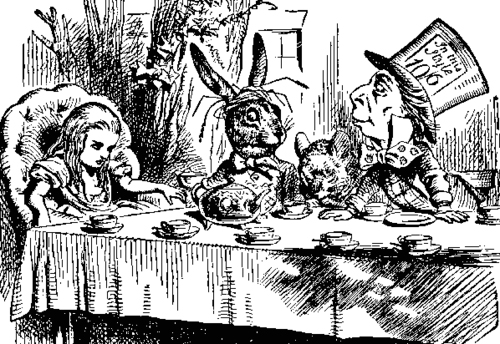
Image via Wikimedia Commons
“Through the Looking-Glass”: The first “Unbirthday Party” had it all.
In 1871, Lewis Carroll didn’t draw the picture before he wrote the book.
Getting the teacups doesn’t get you a party and creative design solutions doesn’t create a brand.
The branding process provides the direction for the brand design outputs and communications process that follows on from it.
Brand Building Foundations and StrategyBEFORE Design, Communications or Marketing Activities | |
FirstA brand must evaluate, identify, codify, map out and articulate what it stands for – to become highly visible, command a premium and give its customers a compelling reason to buy. The elements listed below are the GPS or roadmap for every brand because the outputs provide the direction for communications, design and marketing activities. | SecondDesign, visual content, text, sales scripts, campaigns and marketing activities are created to communicate the brand’s offering and attract its ideal customers to close the sale. The visual language expressing the brand in meaningful context can only be created once the factors that make it different, distinctive, memorable and likeable have been identified, codified and developed in stage one as listed. |
Website/Social Platforms | |
Copywriting Style and Language | |
Content | |
Graphic Elements | |
Signature Language / Voice | Photography / Illustration |
Video / Music | |
Advertising | |
Customer Journey and Experience | Brand Sales Scripts |
What is Branding?
Branding involves a wide range of fundamental concepts. Most importantly, your brand is the cornerstone and foundation that your business is built upon.
- It defines who you are
- It defines what you stand for
- It informs why you exist
- It explains how you’re different
What is Brand Design?
Brand identity design is the outward expression of an organization, product or service that includes its name, logo, and overall visual appearance.
- It is the fundamental means of customer recognition
- It is the first thing that your customer identifies with your company
- It symbolizes the brand’s differentiation from your competitors
- It communicates your uniqueness quickly and effectively
— Test Yourself:
What brands are represented here by designs that have done their job so well that actual brand names aren’t even necessary?
- How do these brands make you feel?
- What do you associate with these brands?
- What do you think about these brands compared to their competitors?
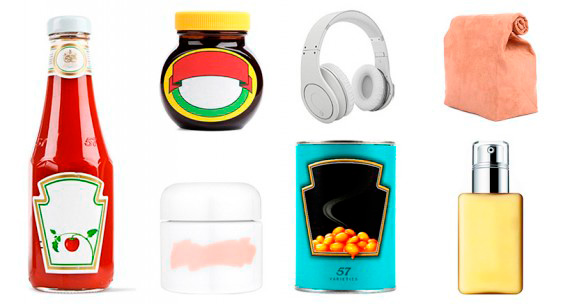
Image via Selfridges
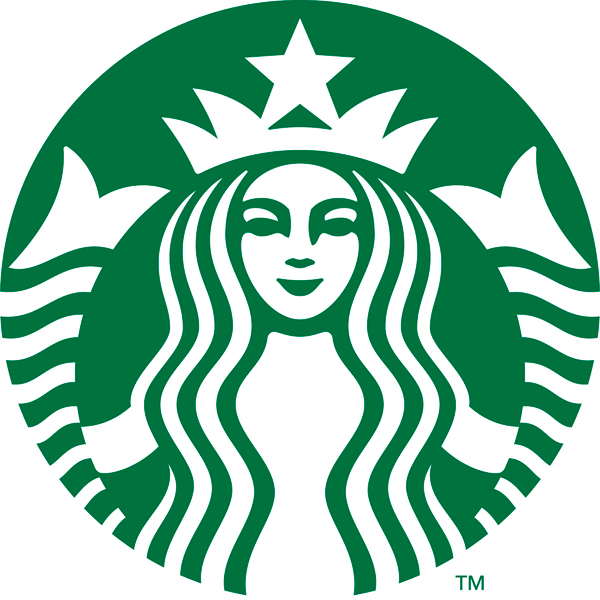
Image via Starbucks
Undressed: Strength of Branding
Looking at the green mermaid you can just smell the coffee brewing.
These pieces of packaging are just the visual identity of something much bigger. It’s really about the brand and what it stands for because even without wearing their logos these undressed brands evoke powerful feelings in us.
We perceive them fully in terms of the customer experience and their value due to price points and positioning versus their competitors.
If you’re struggling to develop your branding versus your design so you’re totally empowered to make your brand stand out and attract your ideal customers, feel free to get in touch and ask about our brand-building service. You will have absolute clarity over what makes your brand distinctive, different and memorable because our brand building process will enrich your brand with meaning so you can stand out, attract your perfect audience and build trust amongst your ideal customers. Meantime read on because the top 10 brand building tips below will enable you to develop your brand a lot faster and more effectively.
A Brand Refresh Provides Opportunity
If you’ve unintentionally taken a weak approach from the beginning, or circumstances have caused your brand to go a bit off kilter or underperform, don’t despair. A professional brand audit will identify areas of weakness, strength and potential opportunities for innovation and growth coupled with indicating whether a brand refresh strategy is in order for any number of reasons:
- Re-establish market prominence
- Acknowledge and reflect a major acquisition
- Announce a new technology or invention that changes its mission and vision
- Revitalize the voice and significance of the brand
- Refocus the company around major customer and/or industry trends
- Reflect a strategic move to reach new markets
- Give new life to flagging sales
- Amplify differentiation to stand out more strongly
- Adapt to maintain market relevance and changing trends
- Move beyond a negative event
If you’d like to give your brand a health check yourself then our brand audit health check programme, the Auditing Analysis Accelerator™ is the perfect solution for you. You can find out more here and watch a free preview here of how to give your brand a health check yourself.
Want to find out more?
Alternatively, if you’d like professional input and direction for building your brand and would like to leverage our experience and expertise then send us an email to [email protected] or give us a ring T: +353 1 8322724 (GMT hours 9:00 – 17:00). We’d be very happy to speak with you.
Related: Rebranding: 15 Do’s and Don’ts for Brand Success
Digital Adds a Layer to Branding Design
It’s tricky. According to the publication Co.Design, “It has never been harder to design a good visual identity. Brands live on dozens of platforms, so they have to look as good on a billboard as they do on a phone screen.”[1]
Related: Digital Brand Identity Essentials – How to Build, Resonate, and Grow
Your SME/SMB Business Branding and Design Top 10 Tips Guide
Keep in mind these 10 factors are what every entrepreneur and small business owner should know about branding and design…in that order! Branding first, design second!
- Design and branding are inextricably linked but distinctly different. When you leverage them both together properly, it’s a win-win. Branding provides the direction for design, not the other way round so branding and its strategy come before design is even considered.
To ensure the best return on your brand building investment, map out, codify and build your brand fundamentals first so that when you move to the design process you not only get great design, but standout design that reflects, communicates and expresses your brand appropriately in visual terms, because it’s the combined impact of brand strategy and design that creates a highly visible brand.
Only then does design become a leveraged commercial tool that truly supports your business growth objectives while also achieving a measurable return on investment.
- KISS: “Keep it Simple, Stupid.” If they cannot understand the brand (What’s it for? What problem does it solve for me? What does it stand for and why should I care?), they certainly won’t want to engage.
The KISS mantra has worked its way into every marketing rulebook because our brains act as filters to protect us from too much information. SME/SMB business owners must recognize when Too Much Information (TMI) is overload and bound to backfire by turning customers off. It’s essential to identify what really matters to your customers and then speak to them in their language without being overly complex.
Anyone who has ever entered an Apple store can see their clean, uncluttered, patented design and layout. It’s not possible to wonder what they’re selling. This approach to less is more has earned the brand the world’s number one retail ranking for sales per square inch.[2]
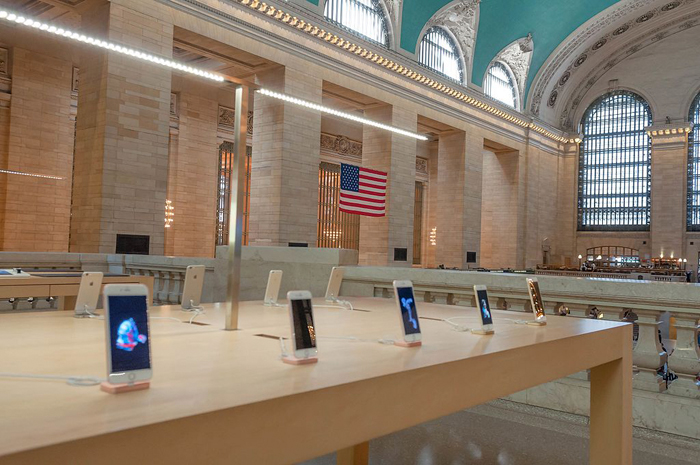
Apple Store at Grand Central Terminal, NYC (Credit: Marco Verch, CC)
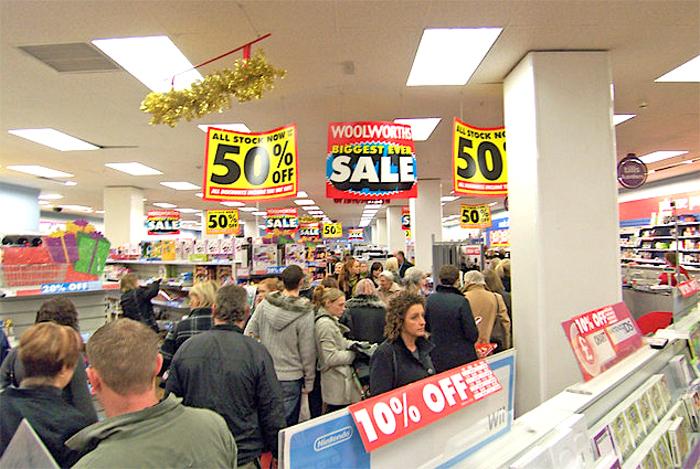
A Woolworth’s closing sale (Wikipedia)
Woolworth’s, once a top international retailer, closed its stores in 2009.
In downtown San Francisco, a parking facility reminds us of what not to do with this jumbled up messaging. KISS lost its way…Needs simplifying, right?
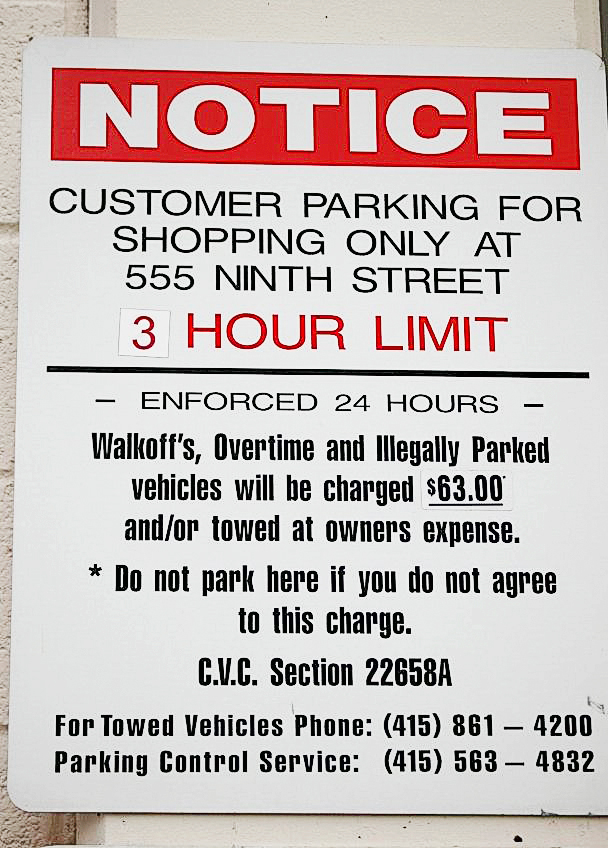
Image via Wikimedia
- Create a strong brand personality. This doesn’t mean creating a cute mascot for every product or service you sell or hiring a VIP or celebrity to be your brand advocate.
Part of brand building is your strategy for connecting with people: customers, yes. But also potential customers, stakeholders, suppliers, and employees alike. What works? Emotion. How to communicate emotion? Through brand personality.
Relatable, engaging, shareable, and often humorous are often interpreted via a persona, an ambassador, a celebrity endorser, a mascot, or an influencer.
Breathe life into your brand. Like people, strong successful brands are alive; they have a distinct voice, individualistic traits, characteristics, and personalities.
Related: Personality Matters: Bringing Your Brand to Life to Grow Profits
Charlie the Tuna was one of the first brand characters (he talked!) created for television in 1958. The dapper, yet cheeky, fish propelled StarKist tuna with a tagline, “Sorry Charlie®” that made its way into the national lexicon. Why? Because “StarKist®doesn’t want tuna with good taste, but tuna that tastes good!”
Along with icons that have endured for decades: the Jolly Green Giant, Morris the Cat, and Ronald McDonald, Charlie made it into the “Salute to Advertising’s Greatest Icons” exhibition at the Museum of Broadcasting in Chicago. See Charlie’s timeline here.
Let the Persona Brand Building Blueprint™ Mastermind be your guide. It’s a highly interactive fast-track programme where you work intensively on your brand alongside other senior managers over the course of two days to codify it, map it out, and build your brand strategy to take your business further, faster. One of the key outcomes is it provides the direction for all your design, marketing and communications campaigns. Discover more about the mastermind here.
- Differentiate to Stand Out. Brands must address positioning in the marketplace as a foundational aspect by identifying their differentiation and unique selling points. Among these are:
- Price
- Expertise
- Distribution
- Purpose
- Heritage
- Innovation
- Storyline
- Convenience
- Delivery
- Quality
- Limited edition
- Personalization
- Customer experience
Related: Brand Differentiation, 30 Ways to Differentiate Your Brand
How one or more of these strategic differentiators translates via design identity is critical to getting the message across to your ideal primary customer so you can attract them to your brand and give them a compelling reason to buy.
- Tell Your Story. Behind every great brand, there’s a great story...or two.
Are you sharing yours? Can you clearly articulate not only what your brand stands for, but also where it came from and how it got to where it is today? What’s your brand’s big “why” and how are you telling that story?
What gets you out of bed in the morning? What’s your inspiration, what’s your vision? How are you translating your unique story and message into something your ideal customer finds irresistible?
Ikea History: How It All Began
Many of the world’s top brands were started by ordinary people with extraordinary ideas and big visions. And being small is a story in itself!
Related: Brand Stories: 5 Compelling Examples That Sell Themselves
- Use Emotion, Use Humour. Quick! Name your favourite commercial of all time. According to consumer research, chances are 71 percent that “funny” is the primary reason you remember the product that advertisement represents.
Be subtle or be outrageous. Tweak a smile or provoke downright belly laughter. Carefully choose the tone of voice that suits your brand or get professional help to do it right.

Build Your Customer Attracting Brand Using The Personality Profile Performer™ Programme with Lorraine Carter
Related: Use Humour in Branding to Create Strong Emotional Bonds to Increase Sales
- Know Your Audience. This is the same advice you’d give to anyone about to make a speech, perform well in an interview, or host a meeting. It’s essential for a brand to know who they’re talking to and where to find them. After all, it’s no good having a great looking resume if you’re applying for a job that’s been filled or designing an amazing slide presentation if the event is held outdoors.
To build your brand effectively you must understand your customers intimately, their needs, wants, loves, hates and aspirations so you can build your brand to really meet their needs — and so they are naturally attracted to it because they find it irresistible.
Consequently, designers must accurately interpret the fully codified and mapped out brand by using the direction it provides to create the appropriate visual communications for a look and feel that will appeal to and attract the ideal target customer and stand out strongly from its competitors.
In 2000, they made a romantic fantasy comedy film about understanding your target customer in ‘What Women Want’. Don’t underestimate the importance of this, understanding your audience has profound implications for your brand strategy.

Image via Flickr, Jonathas Scott
After a freak accident, a chauvinistic, alpha male ad executive gains the ability to hear what women are really thinking.
- Develop Tone of Voice and Be Consistent. A tone of voice embodies the brand personality, captures its spirit, and expresses its values.
What does your brand sound like? Is it trendy and young or established and mature? Is it informal and goofy or serious and informative? Is it sophisticated to pair with a luxury brand or masculine to suit a consumer item for men? Does the tone and voice match the brand product or service?
Related: How to Develop Your Brand Tone of Voice to Increase Sales
Some 55 million views later (on YouTube alone), “Here’s the guy that every man in the world wants to smell like,” says Ellen DeGeneres.
Watch IKEA reach professional young urban dwellers, not with a product hard sell, but with an influencer’s tips for hosting a Friendsgiving to replace the traditional family-oriented Thanksgiving.
Designers must be aware that consistency across all platforms and channels is essential. In my experience of working with many different brands across multiple sectors over twenty years, this is one of the biggest and most common failings amongst SME/SMB brands.
Consistency is critical to success because it engenders trust so if your brand is inconsistent in its communications and how it portrays itself you’re actually undermining its authority and the trust your primary customers will have in your brand. Without trust people won’t buy from you so consistency is critical to building trust so you can increase your sales.
These days, cross-device is a catchword being bandied about, as consumers access brand message – sometimes simultaneously – on various hardware as well as multiple channels. This explains why some of the most popular tweets in history are connected to some of the largest audience television broadcasts, such as the Academy Awards and the Super Bowl.
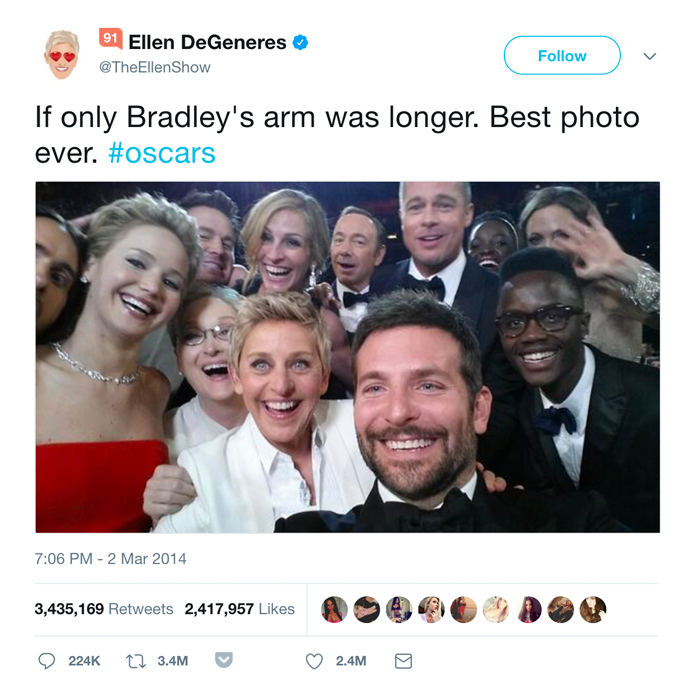
Image via Twitter
Related: Using Video to Broadcast Your Brand Message So You Attract Your Ideal Customers
- Reach Every Touchpoint. Every brand has a customer experience that begins well before the point of purchase. Importantly, as the customer navigates the sales funnel, key touchpoints determine whether the sale will take place.
Brands must fully understand their customer journey when mapping out their brand strategy; designers must deliver its look and feel through the visual communications.
Google Shopper Sciences, IBM Global Business Services, and EY Global Consumer Survey provide this infographic of a customer’s roadmap to a car purchase.
Related: Top 10 Brands for Customer Experience and What You Can Learn From Them
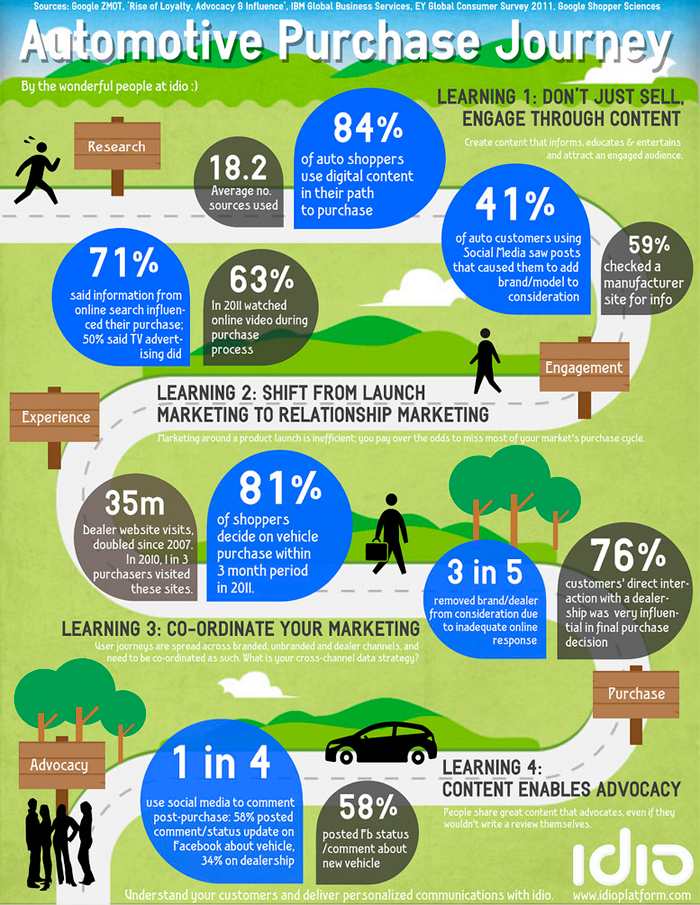
Image via Flickr, Digital Ralph
- Be Authentic. This means demonstrating and delivering on a brand’s values, credibility, and promise. Honesty is the strongest positioning for any brand. And without honesty, there cannot be confidence. Without confidence, there cannot be loyalty.
In a global survey, PR agency Cohn & Wolfe indicated 87 percent of consumers say it’s important for brands to “act with integrity at all times,”[3] reported AdWeek.
Watch the former CEO of Avis discuss the birth of the “We Try Harder” campaign.
The world’s #2 car rental company designed a classic underdog ad campaign in the 1960s, but Robert Townsend explains that without meeting brand promise for customers and sharing the brand culture with employees, the campaign would backfire and kill the brand forever.
As a brand evolves and grows, a brand health check ensures you keep your finger on the pulse because it enables you to keep track of potential strengths and weaknesses together with opportunities for innovation and growth — and when needed it identifies when a brand refresh is required before your brand hits a downward slope.
“Being honest, insightful, realistic, and open to change will enable you to develop and deliver an authentic brand that truly connects with internal and external audiences. Consider your brand a work in progress, even if you think you’ve got it figured out.”[4]
Ask Yourself These Questions:
- Does your brand have all its pillars in place and are its foundations strong?
- Does your brand embrace storytelling as part of its differentiation?
- Are you monitoring the life cycle of your brand itself, or just its visual identity?
- Has your team grasped the difference between branding and design?
- Are you aware of how your customers view your brand on authenticity and on delivering its promise? Is your brand fully aligned between internal and external perceptions?
- Are you delivering a strong, consistent message across all customer touchpoints?
[1] https://www.fastcodesign.com/3066401/the-best-and-worst-branding-of-2016
[2] https://9to5mac.com/2017/07/29/apple-top-retailer-per-square-foot
[3] http://www.adweek.com/digital/the-20-most-authentic-brands-in-the-us-and-why
[4] http://www.chiefmarketer.com/the-art-of-authenticity-in-branding
Purposeful Brands: Why Customers Are Prepared to Pay More
/0 Comments/in Brand Mission, Brand Profiling & Positioning, Brand Purpose, Brand Strategy, Brand Values, Branding /by Lorraine CarterA quick answer please, if you can, to this question: “What does your brand really stand for?” in other words “What’s your brand purpose?”
If you hesitate to succinctly define the mission, vision, and values behind your brand – the primary raison d’être for your brand’s existence — your brand purpose — you can be certain that customers and potential new customers are missing the point entirely too. This is why it’s critical to codify and map out your brand so you are highly visible, stand out, can clearly articulate your brand purpose and deliver an unforgettably great customer experience.
In other words, if customers can’t meaningfully differentiate your brand from your competitors they will default to decisions based on price alone and they won’t pay a premium.
Because…when brands give, brands get.
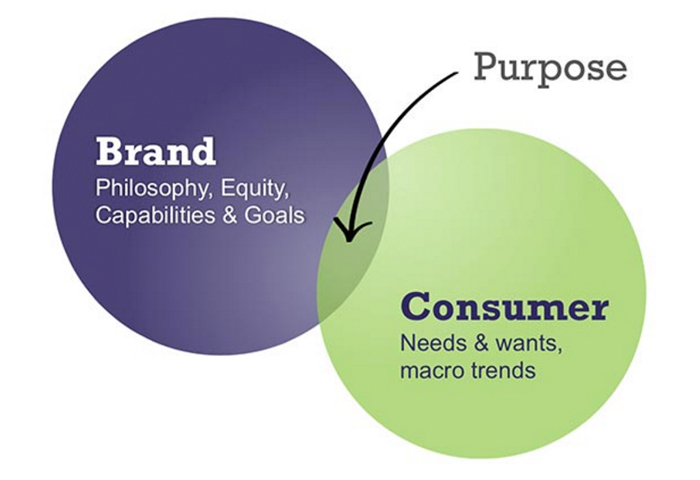
Image via Harbinger Communications
Who Decides and Defines: What is Brand Purpose
Mind you, it’s not as easy as it sounds. In 2014, according to The World Federation of Advertisers, consumers and marketers can be confused by the meaning and focus of brand purpose.[1]
“There is consensus that brand purpose is increasingly relevant,
but people and marketers don’t seem to agree on what it means.
Marketers see it as the bigger picture,
but people see it as what you do in daily life.” –
Stephan Loerke, managing director of the WFA
Where it Matters Most: Brand Purpose
Around the globe, consumers value brand purpose to varying degrees. Responses to whether consumers are willing to pay a premium for a product that supports good causes find Chinese with a very different view than Britons.[2] Nevertheless, this survey result means that even at the low end of the scale, more than one in four would loosen their purse strings for a brand with purpose.
| China | 80% |
| India | 70% |
| Brazil | 55% |
| Malaysia | 55% |
| USA | 39% |
| UK | 28% |
The concept of brand purpose is sometimes overlooked, or not clearly communicated, by small to medium-sized business owners and managers largely because the serious impact it has on accelerated business growth is not fully understood. Brand purpose can get lost in the frenetic pace of a busy startup. So it’s really important to underscore the huge influence brand purpose has on business outcomes, re-define the concept, and demonstrate its influence in commercial terms as the major driver behind perceived value, premium price points and higher sales.
Related: 10 Branding Tips From Silicon Valley on How to Be a Successful Startup Brand
Why Brand Purpose Matters
What do consumers think: Edelman’s brandshare studies[1] reveal that 92 percent of 11,000 consumers surveyed in eight countries want brands to share their values more effectively. Overall, 40 percent don’t think brands are doing enough to communicate and demonstrate purpose in “helping the world” in some way.
Related: Brand CSR: The Business Case for Successful Branding and Social Good
What do executives think: In a study issued by EY Beacon Institute and Harvard Business Review[2], 85 percent of the 474 business executives surveyed indicated they strongly agree they’re more likely to recommend a company with a strong purpose. They also strongly agreed, at 80 percent, that a company with shared purpose will have greater customer loyalty.
Related: CEO Brand Leadership: How Vision Drives Brand Growth
See the results in two diagrams: Brands that prioritize brand purpose benefit from stronger growth.[3]
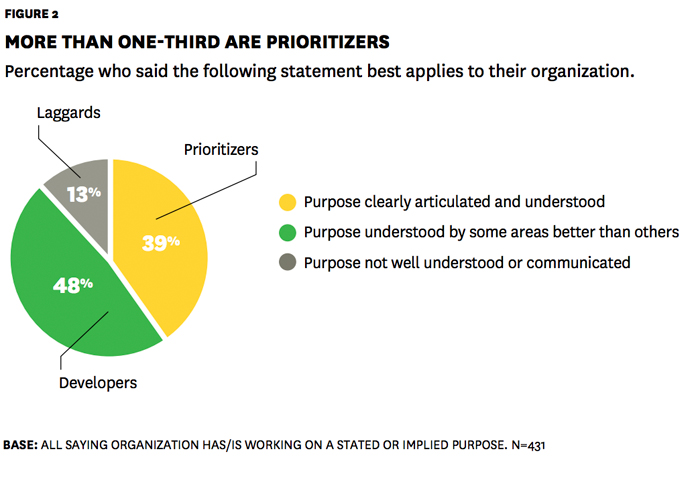
Image via Harvard Business Review
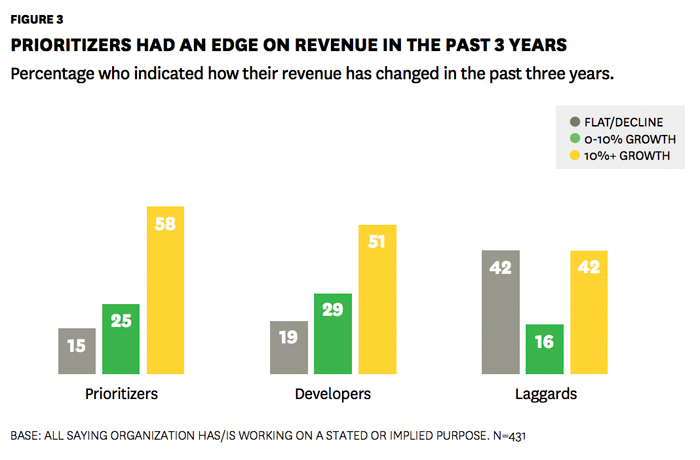
Image via Harvard Business Review
Defining Brand Purpose
What does this all mean? Brands with clarity of purpose outperform brands who lack it. To survive, brands must live and breathe through their core values because these are the fundamentals differentiating a brand from all its competitors so it stands head and shoulders above all the rest — and consequently commands a premium.
Author Simon Sinek sums the lessons from his book, “Start With Why” in his famous TED Talk about communicating brand purpose.
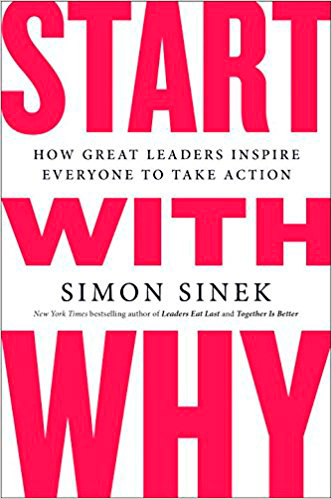
“People don’t buy what you do. They buy why you do it.”
– Simon Sinek
Sinek goes on to say, “The goal is not to do business with everybody who needs what you have; the goal is to do business with people who believe what you believe.”
Brand Purpose and Customers
The underlying message is that emotion drives purchase. Brands can engage primary customer emotions through articulating what the brand stands for, that is, purpose equals its mission, vision, and values.
The brand must reinforce this and bring it to life via experiential terms, such as customer service and brand touchpoints.
Related: Top 10 Brands for Customer Experience and What You Can Learn From Them
Be Different, Be Transparent Through Brand Purpose
Brand purpose is also a primary factor in brand differentiation because when it is sufficiently strong and compelling, it makes a brand highly visible and different compared to every competitor.
Simplistically speaking, if a brand’s purpose is aligned with the values of its ideal primary audience, those customers will naturally be attracted to it and want to buy it. People reward brands that openly share their values when those values are transparent. “Do we believe in the same things?” is what a customer wants to know. However, it is not the customer’s job to dig deep for that answer.
If brands don’t stand up for what they stand for — and diligently communicate it — nobody knows what the brand purpose is all about.
Brands with a purpose command the customer’s attention because, price point aside, a meaningful, emotional connection is valuable to the purchaser.
Related: Personality Matters: Bringing Your Brand to Life to Grow Profits
Whether a giant corporation or small business owner, it is critical to identify your brand purpose. Are you entrepreneurial? Find out what you truly stand for as an entrepreneur. Determine how to embody this purpose and communicate it to everyone your brand interacts with, including employees. You will enjoy higher profits while making your lasting mark on the world.
Related: The Age Of Internal Branding And Selling It From The Inside Out
If you want direction and support empowering you to transform your brand so you stand out with a strong brand purpose and increase your sales then the Persona Brand Building Blueprint™ Mastermind is the perfect fit for you.
This is a two-day brand building intensive shared with a small group of like-minded peers where you work on your brand with our leadership. In fact, over the two days, you reevaluate your brand, codify it and create your brand purpose and strategy to stand out and attract your ideal customers whether you’re revitalizing an existing brand or creating a new one.
At the end of the two-day Persona Brand Building Blueprint™ Mastermind you leave with absolute clarity on your brand purpose and your fully documented brand strategy ready for implementation in your business or organization.
This is not a theory based programme but a highly interactive fast-track programme where you work intensively on your brand throughout the two days duration, under our tutelage, using our ten step system to:
- Completely re-evaluate your brand to make it much stronger so it’s highly visible enabling you to increase your profits
- Map out your brand in full so it’s codified and comprehensively documented to grow your business faster
- You leave with your total brand road map or GPS of your brand empowering you to manage your brand, stand out and attract your ideal customers so you multiply your sales
Outcome: Your brand transformed so you can increase sales.
If your team is larger and you’d like to include everyone’s’ participation in the Persona Brand Building Blueprint™ Mastermind then we also run in-house private client brand building intensives tailored to your bespoke requirements so you’re empowered to take your business further a lot faster.
Want to know more?
Give us a call T: +353 1 8322724 (GMT 9:00 – 17:00) to find out more and discuss your preferences or send us an email to [email protected]
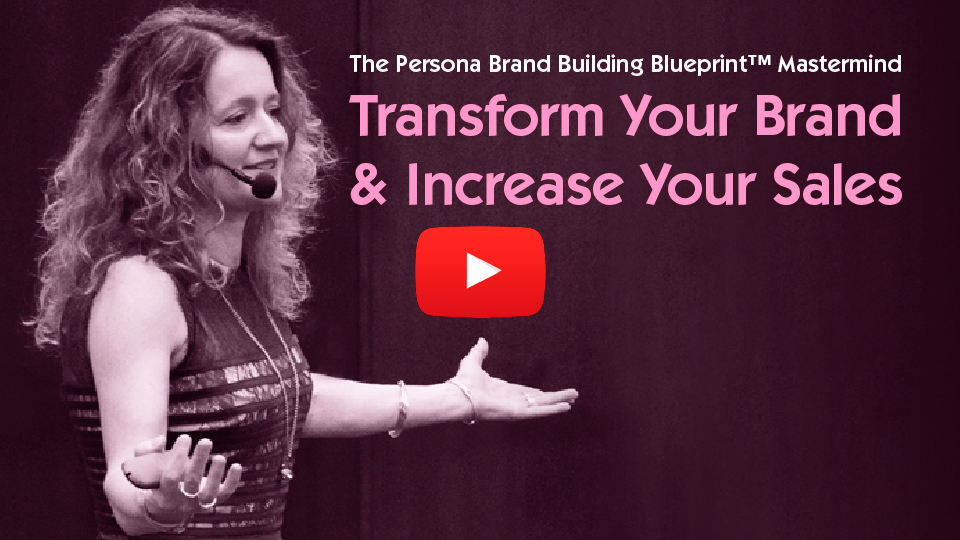
Codify and build your highly visible, profitable brand at the Persona Brand Building Blueprint™ Mastermind with Lorraine Carter
Examples of Explicit Brand Purpose
Dove and Levi Strauss are two brands that articulate brand purpose extremely well, fueling the emotional factors that drive purchase decisions.
Here we delve into these two examples of successful brands whose achievements and prosperity are largely underpinned by very compelling brand purpose. While these are not small business examples, there are reasons tied to brand purpose that explain how these companies grew larger and more profitable because of their strong brand purpose.
Related: 4 Reasons Why Your Business Profit Starts With Your Brand Mission
Brand Purpose Example: Dove Beauty Bar
It’s been over a decade since Unilever launched the groundbreaking “Campaign for Real Beauty” for Dove.
Brand Purpose: “To educate and inspire girls and women to embrace a wider definition of beauty.”[4]
Dove Real Beauty
“You’re more beautiful than you think,” was one early example. Following 19 million views on YouTube alone, its purpose of making women feel better about themselves launched the Dove Self-Esteem Project.
Result: “Since the inception of the Campaign for Real Beauty we have seen a significant positive shift in brand perception…Dove is seen both as a leader in the personal care company, as well as a leader in the Real Beauty conversation.”
Dove has achieved a return on investment that cannot be measured solely in uplift in the sale of bars of soap, although that’s occurred as well. Just ask one of their 27 million followers on Facebook.
In 10 years, the campaign, which Ad Age tapped as the best of the 21st century, has reportedly helped boost Dove sales from $2.5 billion to $4 billion, says the publication.
Dove Says:
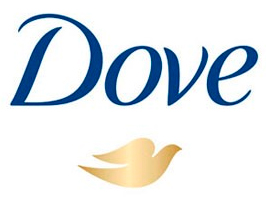
Image via Dove
“…11 years since we launched the Dove Self-Esteem Project, more than 625,000 teachers have delivered a Dove self-esteem workshop and more than 1.5 million parents have engaged with our online content. We’ve already helped 19.4 million young people in 138 countries. But we won’t stop there. Our global mission is to reach 20 million more by 2020.”
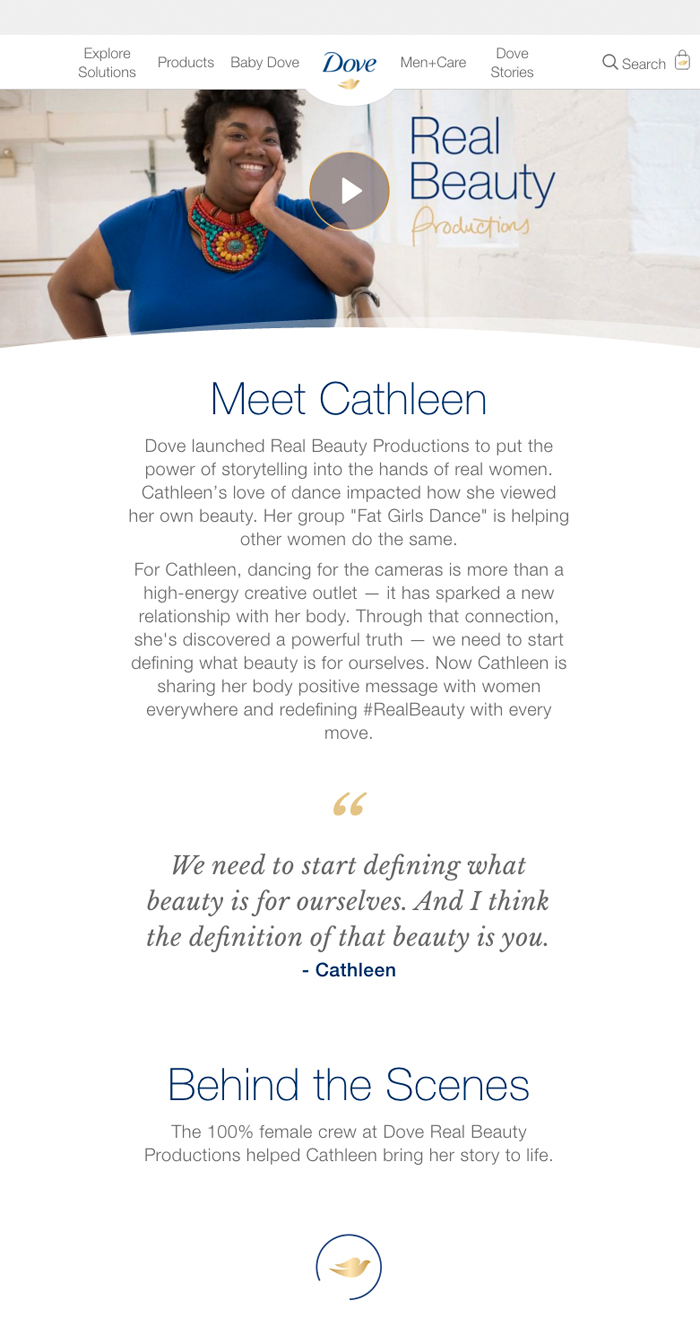
Image via Dove
What’s Next: Dove Real Beauty Productions launched in 2017 to bring touching real stories from real women to life in mini-videos. Meet Kylee, Meet Cathleen, and so on present revealing self-portraits, bravely challenging narrow definitions of “real beauty.”
How Much: At 6 bars of soap for $6.88, Dove Beauty Bar isn’t a costly item. But, $4 billion is a lot of soap. Clearly, women drawn in by the self-esteem campaign haven’t been concerned about getting another brand of soap for a few cents less.
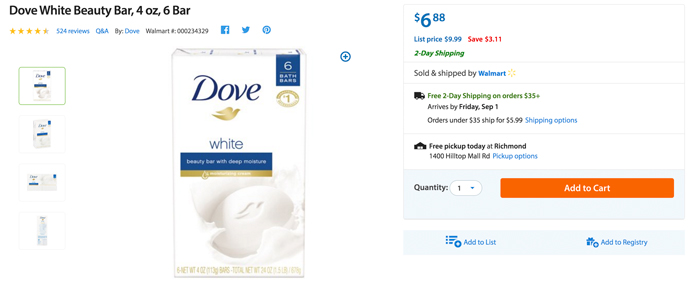
Image via Walmart
Brand Purpose Example: Levi’s
In the mid-20th century, former CEO Walter Haas articulated Levi’s brand purpose: “Each of us has a capacity to make business not only a source of economic wealth but also a force for social and economic justice.”
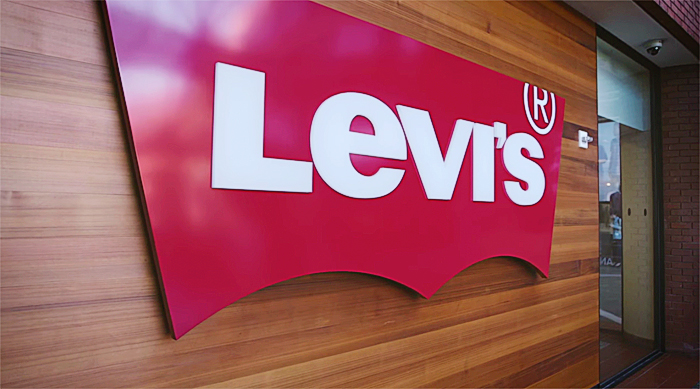
Image via Levi Strauss & Co.
Levi’s History: A brand’s history is “secretly seductive,” suggests Edelman. It can help to define purpose, as in why was the brand born in the first place? In the case of Levi’s, that answer is embedded in immigration, the nation’s westward expansion, family business, the determination and grit of its early nation builders, coupled with the boom of California Gold Rush days.
Related: Family Business Branding and The Secret Drivers to Brand Success
Manufacturing the world’s first blue jeans in 1873, Levi Strauss had an instant hit, creating durable, tough pants that miners needed to withstand the wear and tear of the job. Brass rivets were added to the pockets.
Giving Back: Due to the early success of the company, a commitment to giving back to the community began in the mid-19th century with support for an orphanage. Three decades later, the 1906 San Francisco earthquake and fire destroyed Levi’s headquarters and two factories along with 80 percent of the city. The company responded by extending credit to its wholesale customers so they could get back on their feet and back in business.
Related: Brand CSR: The Business Case for Successful Branding and Social Good
The Levi Strauss Foundation
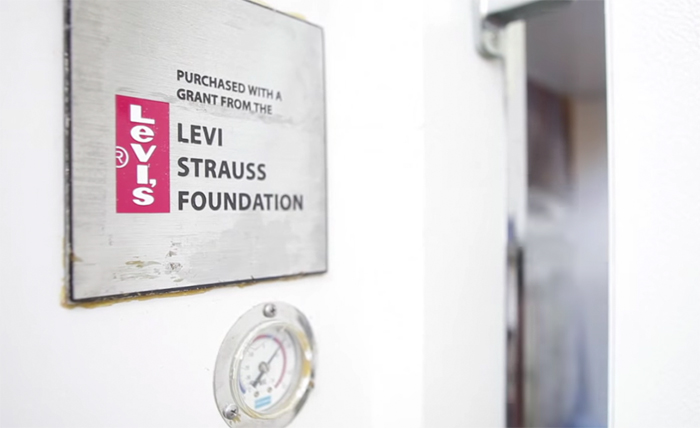
The Levi Strauss Foundation started with a 1897 donation to the University of California. From worker’s rights to environmental sustainability, the foundation continues its San Francisco Bay Area local commitments while making positive, major worldwide impact.
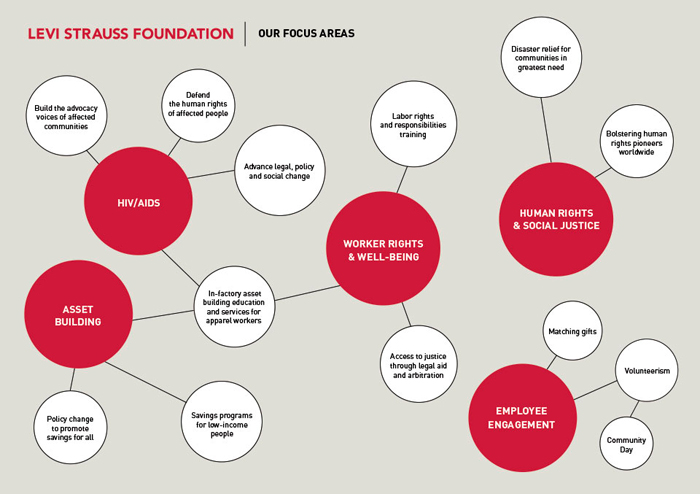
Image via Levi Strauss Foundation
Levi Strauss & Co. Says: Giving back never goes out of style. “We’re well-known for doing things that are right, that may be difficult…” says Tracey Panek, the company historian.
Levi’s Core Values endure and help shape the brand culture in a positive way.
- Empathy — walking in other people’s shoes
- Originality — being authentic and innovative
- Integrity — doing the right thing
- Courage — standing up for what we believe
Related: The Impact of Company Brand Culture On Driving Performance and Increasing Sales

La Cocina is a commercial kitchen incubator for low-income women in San Francisco. It gives them “access to financial, marketing and business opportunities that will allow them to transform their passion into full-fledged livelihoods for them and their families,” explains Levi Strauss Foundation, which supports the cause.
Articulating Brand Purpose: In 1990, the Harvard Business Review interviewed Robert D. Haas, then Chairman and CEO, the great-great-grandnephew of the company founder whose uncle, father, and grandfather all led the company before him.
At that time, he explained what the company had learned from its century-long tradition for social responsibility and how that reputation is inextricably linked to Levi’s success.
“In the past, however, that tradition was viewed as something separate from how we ran the business. We always talked about the “hard stuff” and the “soft stuff.” The soft stuff was the company’s commitment to our work force. And the hard stuff was what really mattered: getting pants out the door.
What we’ve learned is that the soft stuff and the hard stuff are becoming increasingly intertwined. A company’s values—what it stands for, what its people believe in—are crucial to its competitive success. Indeed, values drive the business.”
– Robert D. Haas
In the ongoing story of “Who We Are,” Levi Strauss shares its message about “not just in what we do, but how we do it.”
How Much: Nobody ever said Levi’s 501 are the least expensive jeans. An average pair of purchased in San Francisco in mid-2017 is $67. You can certainly get jeans for less.
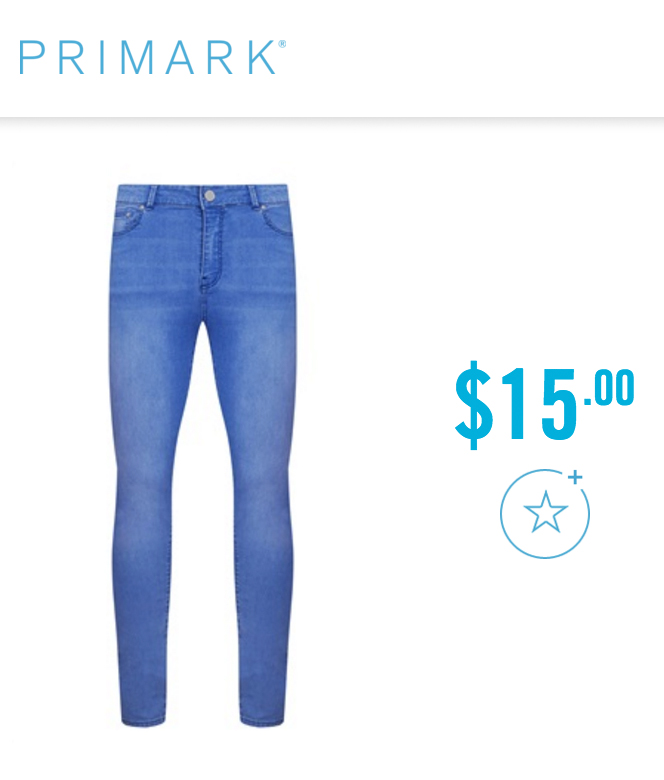
Image via Walmart
Financial Results: Levi’s financial results have been extraordinary over its 160 year lifetime. The 2016 Annual Report indicates that net revenue was $4.6 billion, representing 3 percent growth worldwide over the previous year.

Image via Levi Strauss and Co.
How to Build Your Brand’s Purpose
When working with our private clients we use the Personality Profile Performer™ System to develop key brand foundational elements for their brands. The outputs from the Personality Profile Performer™ then provide you with your brand blueprint or brand roadmap, together with the brand direction for your brand design application in brand collateral, brand communications strategy, training and so forth.
If you want direction developing your brand so you can increase your profits then take a look at our online brand building eprogramme called the Personality Profile Performer™. This online course takes you through all the key steps you need to implement as you build your brand, including your brand purpose. You can watch a free course preview here.
Notice that purpose is one of the key building blocks for a strong brand foundation. This part of the brand foundation provides the critical direction for brand strategy, and consequently, for high performance with the laser-focused results marketers seek. Here we aim to show you how a well-defined brand purpose is inextricably tied to stronger brand performance that commands a higher price point.
Alternatively, if you’d like professional direction to develop your brand purpose and would like to explore working with us then send us an email to [email protected] or give us a ring T: +353 1 8322724 (GMT hour 9:00 – 17:00). We’d very happy to speak with you.
Related: Brand Profiling – How Brand Performance and Purpose Are Inextricably Linked
Questions to Ask Yourself:
- Would you pay a premium for these brands? Can you see why people do?
- Is your brand purpose well defined and well articulated?
- Can your customers express your brand purpose? Can your employees?
- Does your brand purpose reflect authenticity?
- How does your brand demonstrate its brand purpose across multiple customer touchpoints?
- Is your brand focused on creating purpose that commands your customers’ attention and discretionary spend?
[1] https://www.edelman.com/insights/intellectual-property/brandshare/about-brandshare
[2] http://www.ey.com/Publication/vwLUAssets/ey-the-business-case-for-purpose/$FILE/ey-the-business-case-for-purpose.pdf
[3] Ibid.
[4] https://www.facebook.com/pg/DoveUS/about/?ref=page_internal
[1] http://adage.com/article/global-news/marketers-confused-meaning-focus-brand-purpose/292325
[2] Ibid.
4 Reasons Why Your Business Profit Starts With Your Brand Mission
/0 Comments/in Brand Culture, Brand Mission, Brand Profiling & Positioning, Brand Strategy, Branding /by Lorraine CarterIn just about any niche, competition is fierce. Yet many SME, SMB, mid-size to large companies neglect to develop and articulate their brand mission because they’re either not sure how to do it or don’t realise it’s importance.
This in effect means they have nothing of substance [beyond price fights] to attract their ideal customers, whether their audience is B2B or B2C. Your brand mission is one of the critical deciders in captivating your ideal customers so they don’t go to, or buy from your competitors.
When you’re clear on your company’s brand mission, it acts as the overall steering mechanism of the business.
The best companies in the world understand the value of brand mission. It is your brand mission that impacts key decision making, strategic planning, productivity, service and brand strategy and marketing direction.
The real secret of incorporating your brand mission though, is that it drives profit growth because your brand mission and everything that follows it is what attracts the right people – employees and customers; those who believe what you believe. And when you tap into what’s important to the right people, you make considerably more money.
Related: 6 Tips For Building Your Profit Growth Plan
What Does Brand Mission Mean?
Branding is all about human psychology and perception. It consists of different levels, like the brand vision which drives the other elements, including the mission. Brand mission answers the question of, “how do we achieve our brand vision?” It is the “who we are and what we do” of a company.
Let’s get one thing clear from the start though, your brand mission is not a dusty mission statement hanging on the corporate wall. Rather, it’s how the company carries out its mission.
The biggest benefits of developing a clear, strong brand mission are:
- Recognition. Even if your business slots into the small to medium sized, having consistent messaging, tone-of-voice, language, personality, look and feel makes it much easier to attract and remain front-of-mind in your ideal target customer.
- Professionalism. Branding your business makes you appear better, larger and more successful. It makes you more trustworthy, and trust is what makes people ultimately decide to buy.
- Purpose. The brand mission unites employees in one single purpose and makes the business stronger and more effective. When the employees of a company or organisation have a compelling purpose, a reason for being part of something bigger than themselves, then the drivers behind what they do are far more compelling and effective than mere economics alone. These emotional factors are far more potent because they’re the driver behind why people commit to buying something more expensive, working after hours when needed, going the extra mile and so forth. People need to feel that the work they do matters and is part of something bigger — a brand mission is the rallying call for this.
Related: The Age of Internal Branding and Selling From The Inside Out
In the video below, Simon Sinek talks about the psychology of employee fulfillment. A brand mission unites the humans in your company and gives them a sense of common purpose, which ultimately leads to higher productivity and superior quality work.
This is a vital point because much of the monetary benefits derived from a strong brand mission are the consequence of how employees respond when they share a greater sense of purpose.
What Makes A Strong Brand Mission?
A strong brand mission must;
- Be really clear
- Easy to understand
- Represent a higher truth
- Create a lasting impact in the world
- Have meaning beyond the money
Developing a brand mission is about pulling together your company’s vision, strategy, future product and service development, together with its operational and marketing priorities.
By using strategic thought, creativity, expression, and innovation, it combines:
- The company mission
- The customer mission
- The business mission
Essentially, your brand mission is your framework for action, your raison d’être behind the what, why and how for everything you do — the drivers for not only you and your internal team but for the reasons why your customers choose you over your competitors.
Related: Family Business Branding And The Secret Drivers to Brand Success
How Your Brand Mission Drives Profits
1. Brand Mission Underpins Your Company Performance
Raj Sisojdia, a Babson professor, studied 28 companies between 1996 and 2011. His conclusion was that purpose-driven enterprises grew by a whopping 1647% compared to the S&P 500 average of 157%.[1]
Many of the best companies in the world are a result of high employee engagement, which is based on purpose. And purpose, more than money, motivates people to arrive at work every day so that they can make a difference.
The very sad fact is that the majority of employees don’t even know the brand purpose of the companies they work for.[2]
Traveling Vineyard on the other hand, a direct wine sales small business, increased customer acquisition by clarifying their purpose and brand mission.[3]
They changed their focus from “wine sales” to “sharing the love of good wine with the world”.
Related: Personality Matters: Bringing Your Brand to Life to Grow Profits
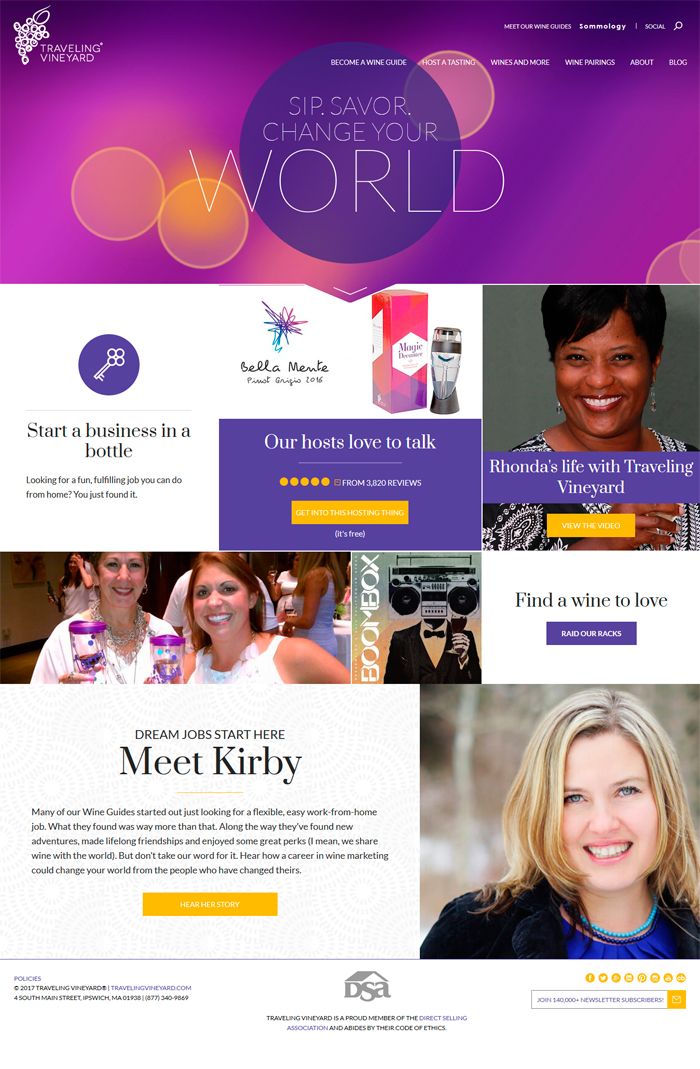
Image via Traveling Vineyard
The Traveling Vineyard lives out their brand mission in everything they do and is expressed through the language and messaging on their website. This critical change in focus in their brand mission is what delivered a dramatic increase in people becoming Wine Guides; resulting in an increase in wine sales.
Their revamped strategy became about getting people to become Wine Guides (ultimately sales reps) who share wine experiences in a relaxed home environment. Instead of focusing on getting people to sell their wines, they changed their internal culture to be one that would transform lives by providing fulfilling, fun and flexible work.
In this way, they were able to bring their customers and employees together with a more meaningful purpose. Changing their internal brand mission resulted in a 49% increase in conversion rates for Wine Guides in the first year, and 83% lead forms submission on web pages that expressed the company’s purpose.
Related: Brand Profiling: How Brand Performance and Purpose Are Inextricably Linked
2. Brand Mission Attracts The Right People
One of the greatest reasons for incorporating a brand mission, is that it helps attract the right people, for the right reasons. Who are the right people? Those that will ultimately buy from you. And of course, it’s essential to draw the right employees to your company; those that are the right “fit” for your company’s culture, and those who will add the most value to your vision.
Your brand mission aligns the internal (staff) and the external (customers).
The Airbnb Story: How Three Ordinary Guys Disrupted an Industry, Made Billions … and Created Plenty of Controversy, by Leigh Gallagher, tells of how a young brand developed into a household name because of its brand mission.
Essentially, Airbnb is a tourist booking facility, but what separates it from it’s competitors is that the focus is on making memories and creating experiences. It is this mission and message which has been and continues to be one of the key drivers behind their success.
In mid-2014, Airbnb developed a new mission — to make people around the world feel like they could “belong anywhere.”
The founders wanted Airbnb to stand for something much bigger than travel; it would stand for community and relationships and using technology for the purpose of bringing people together.
Related: The Impact of Company Brand Culture On Driving Performance and Increasing Sales
Check out the story[4] about Airbnb’s massive growth, and how their brand mission catapulted it:
Although now a household name in many parts of the world, Airbnb started as most businesses start – small. Now that they’re a well known brand name, you may be thinking their branding story may not be applicable to you.
Related: Brand Stories: 5 Compelling Examples That Sell Themselves
Even if you’re flying solo – you may be a freelance writer, business consultant, coach, author, IT consultant, or building a multi-level marketing business – you should still have a brand mission to differentiate yourself from your competitors.
Do a Google search with your niche keyword and you’ll see just how many online competitors you have, so you need to develop and use your brand mission as part of your strategy for standing out and getting attention from the people who need your service or product. As a solopreneur, it’s especially important to discover your uniqueness and leverage your personal brand identity. Otherwise, you’re just another anchovy fish lost in the ocean.
If you want direction and support empowering you to transform your brand so you stand out and increase your sales then the Persona Brand Building Blueprint™ Mastermind is the perfect fit for you.
This is a two-day brand building intensive shared with a small group of like-minded peers where you work on your brand with our leadership. In fact, over the two days, you re-evaluate your brand, codify it and create your brand strategy to stand out and attract your ideal customers from the ground up whether you’re revitalizing an existing brand or creating a new one.
This is not a theory based programme but a highly interactive fast-track course where you work intensively on your brand throughout the programme duration, under our tutelage, using our ten step system to:
- Completely re-evaluate your brand to make it much stronger so it’s highly visible enabling you to increase your profits
- Map out your brand in full so it’s codified and comprehensively documented to grow your business faster
- You leave with your total brand road map or GPS of your brand empowering you to manage your brand, stand out and attract your ideal customers so you multiply your sales
Outcome: Your brand transformed so you increase your sales.
At the end of the two-day Persona Brand Building Blueprint™ Mastermind, you leave with your fully documented brand strategy ready for implementation in your business or organisation.
If your team is larger and you’d like to include everyones’ participation in the Persona Brand Building Blueprint™ Mastermind then we also run in-house private client brand building intensives tailored to your bespoke requirements so you’re empowered to take your business further a lot faster.
Ring us today and discover how to build your winning brand to make it really stand out and increase your sales
Want to know more? Give us a ring T: +353 1 8322724 (GMT hours 9:00 – 17:00) to discuss your preferences or send us an email to [email protected]
Regardless of the size of your business, you need to know who you are, what you stand for and what you can offer your audience because the service or products you promote are not what you are really selling.
Remember, 60% of branding is about perception and only 40% is about your product or service so you must touch the heart first if you want to move the mind.
Once you understand that and begin marketing with that concept front of mind, that’s when you’ll really start generating serious revenue.
Just like a brand mission for conglomerates, a personal brand is a combination of your strengths, passions, gifts, and the purpose that you bring. In the next video by TEDx Talks, Anand Pillai provides a formula for building a personal brand, remembering that your mission is what drives your business, solo or major conglomerate:
Related: Personal Branding: We Are All CEOs (Part 1)
Smaller B2B companies can stand out from the crowd simply by providing brilliant content on their website, as the Buffer App does on their blog. A simple branding strategy for smaller businesses, Buffer is creating a cult following by publishing content that is irresistible and central to their brand mission.
Buffer’s brand mission[5] is to “create helpful, actionable content that helps people with their social media presence. To connect a community of like-minded people with passions for social media, self-improvement, and Buffer’s values. To share Buffer’s internal approach, philosophies, and culture to help create a new way to work”.
Their mission drives their brand strategy and consequently all marketing activities.
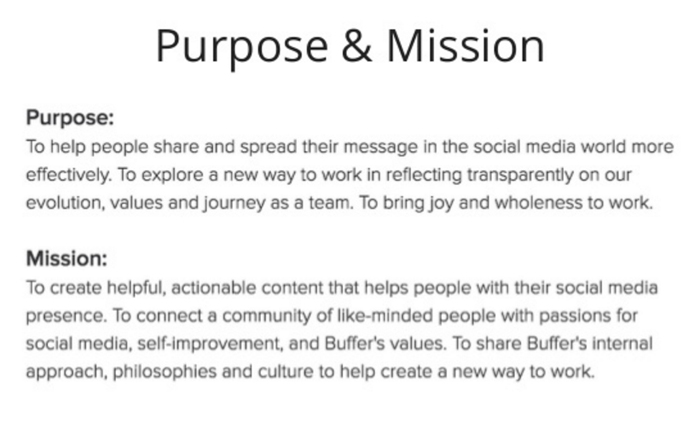
Image via Buffer Slideshare
Buffer was only founded in 2010. In 2016, their staff complement doubled from the previous year. They now boast 75 employees who work remotely around the world.
Their success is further evidenced by the results achieved with their content: one of their posts[6] has been shared 23 000[7] times and earned 210 000 likes on Facebook. Not bad for a humble team of 75…
By addressing target audience problems via blogging, and becoming known for publishing genuine value-add content, they get the attention of the people they’re targeting.
Related: Personal Branding: We Are All CEOs (Part 2)
3. Brand Mission Creates Consistency
Have you ever experienced exceptional service from a company, and the next time, expecting the same level of service, were deeply disappointed?
That’s because the brand lacks consistency. In fact, consistency engenders trust so if your brand falls short in any areas of the business or at any brand touch point, be it your brand collateral, customer facing staff, service or product delivery you undermine the power of your brand. Consequently, your sales and profitability are also immediately compromised because inconsistencies plant seeds of doubt and create bad customer experiences. Companies who boast consistent good customer experience are those who put standards in place to carry out their brand mission consistently in everything they do.
Brand awareness also depends on consistency. In fact, every aspect of managing, protecting, directing and preventing unintentional brand sabotage requires branding style guides.
Related: Brand CSR: The Business Case for Successful Branding and Social Good
If you want direction developing your brand so you can increase your profits then take a look at our online brand building eprogramme called the Personality Profile Performer™. This online course takes you through all the key steps you need to implement as you build your brand, including your brand mission. You can watch a free course preview here.

Build Your Brand Mission Using The Personality Profile Performer™ Programme with Lorraine Carter Here
If you’d like professional direction to develop your brand mission and would like to explore working with us then send us an email to [email protected] or give us a ring T: +353 1 8322724 (GMT hour 9:00 – 17:00). We’d be delighted to talk with you.
4. Brand Mission Ensures Clarity
Companies who provide the best customer service experience are driven by employees who are armed with clarity because their brand mission enables effective and fast decision making with clear judgment. Consider the front facing staff member who is shouted at by a disgruntled customer. After calming the customer down and finding out the exact issue, the employee is able to rectify the issue by taking some kind of on the spot action.
In the same way, leaders who have a clear sense of what matters most, are enabled to set priorities and determine the best path for the organization. Clarity drives commitment and dedication.
Related: CEO Brand Leadership: How Vision Drives Brand Growth
Summary
The best companies in the world to work for, and the most profitable, understand the power of the brand mission.
Developing your brand mission drives the company vision. The key benefits are brand awareness, effective lead generation, professionalism, and most importantly, providing a united purpose between employees which in turn generates multiple other benefits that collectively impact the bottom line positively to increase sales.
Related: What’s a Cult Lifestyle Brand And How Do You Create One?
Essentially, your brand mission is the driving mechanism that activates success.
In summary, your brand mission drives profits by:
- Boosting employee performance and company growth
- Attracting the attention of your ideal target audience
- Creating consistency in brand messages and service which builds trust
- Providing clarity for leaders and employees
Questions to consider…
- How does your business achieve its overall vision?
- What need does your business hope to fulfill?
- Does each member of your team understand his or her role in your overall brand vision?
- What separates you from your competitors?
- How do you touch the hearts of your customers so buying decisions are no longer about selling at the lowest price?

Build your brand strategy at the Persona Brand Building Blueprint™ Mastermind with Lorraine Carter
[1] https://www.brandingstrategyinsider.com/2016/12/how-brand-purpose-propels-brand-profits.html#.WTab1dwlHIU
[2] https://innovatenewalbany.org/branding/why-purpose-driven-companies-are-beating-the-competition/
[3] http://genuinely.co/what-we-do/case-study/
[4] http://fortune.com/airbnb-travel-mission-brand/
[5] https://www.slideshare.net/Bufferapp/buffer-marketing-culture/2-Purpose_Mission
[6] https://blog.bufferapp.com/10-scientifically-proven-ways-to-make-yourself-happier
[7] https://insights.newscred.com/branded-content-marketing-hubs/
Using Video To Broadcast Your Brand Message So You Attract Your Ideal Customers
/0 Comments/in Brand Message, Brand Personality, Brand Profiling & Positioning, Brand Strategy, Branding, Video /by Lorraine CarterThere are two important takeaways for you in this post about brand message using video:
- The first is that you don’t need to be a big-time corporation to publish a video that becomes popular. Today, if you have a smartphone, you can make a great marketing video to depict your brand message. A one-minute video highlighting the things that make your company unique could become your best customer acquisition tool yet.
- The second is that successful videos by SME / SMB businesses or solopreneurs are always about delivering a brand message with strategic intent. It’s got to give a value-add message or contribute towards enhancing your target customers lives. Alternatively, it needs to incorporate story building and showcase your brand’s characteristics. Injecting personality into a company’s online presence is what sets your business apart from the crowd so video is the perfect vehicle to showcase your brand at its best with its stand out personality.
Publishing a video just for the sake of it will not bring success because it’s the brand strategy behind the video content coupled with the people delivering the message to the camera, which makes it successful.
Related: Video Brand Strategy Top 11 Tips for How and Why You Need To Use Video
Codifying Your Brand Message to Stand Out and Create Great Videos to Attract Your Ideal Customers
Every business has its own brand, whether it’s strong because it’s been created with deliberate intent, or whether it’s weak and undeveloped as a consequence of a series of unplanned actions.
To codify your brand means to plan the messages you want to send out to attract your ideal customers and the manner in which you send those messages via the personality of your brand. Video is one of the brand strategy mechanisms for sending out those messages. Every message your business sends out must be in line with what you want your brand to be saying about itself and what it stands for — it’s purpose.
Related: Personality Matters: Bringing Your Brand to Life to Grow Profits
It’s often the case that SME / SMB businesses unintentionally neglect their own branding, to their detriment, because they lack the big brand know-how. Our mission is to empower business owners and entrepreneurs so they can transform their brands and increase their sales.
So the question here is, what’s the big deal about brands and branding?
Well, think of your brand as a store. What would it look like in a mall or shopping centre so it attracted the right customers? Because not all people or businesses will buy into your brand and what it stands for, and not all people or organizations need what you offer. So if your brand was a store you’d want to attract those for whom your product or service really meets their needs and is a great fit and deter those who are not really your ideal customers.
So. What would your brand look like if it was a store in a mall or online?
If you’re having trouble relating to this question consider asking these questions about your brand because the answers will provide some insight to help you codify your brand so it stands outs and attracts your ideal customers:
- What makes your brand unique?
- How do you want those you serve to feel when they’re doing business with you? For instance, is the experience uplifting, fun, spiritual, exciting, or something else?
- Who are your customers, or who do you want them to be? Picture them in your mind and describe them in detail.
- Who are your competitors and how do they compare?
- What problem does your company solve?
- Is your value proposition relevant to your customers?
- When people think about your brand, what feelings do you want to evoke?
- What kind of personality should your brand have in order to attract the right customers?
Codify who your brand is, it’s personality and promise, into a core concept that becomes the filter and directional reference for building and implementing your message and brand strategy.
If you want some direction developing your brand and your brand strategy so you can build your brand using really strong shareable videos then take a look at our brand building programme called the Personality Profile Performer™. This online course takes you through all the key steps you need to implement in building your brand. You can watch a free course preview here.

Want to create your strong brand message so it really attracts your ideal customers? Find out how here
Ring us today and discover how to make your brand message really stand out
Give us a call T: +353 1 8322724 (GMT hours 9:00-17:00) or drop us a line here to [email protected]. We’d be delighted to talk with you.
Use Video to Stand Out and Make Your Brand Matter to Your Customers Through Your Brand Message
Statistics show that on average, a person abandons a website, or blog post on a website, within 10 – 20 seconds[1] of arrival, but the average video holds 37%[2] of people’s attention right to its very end. Since the majority of videos are just under two minutes long[3], we can safely state that video is more effective at getting and keeping attention, than the written word alone.
In addition, according to SocialFresh[4], video produces the 2nd highest return on investment out of all content types:
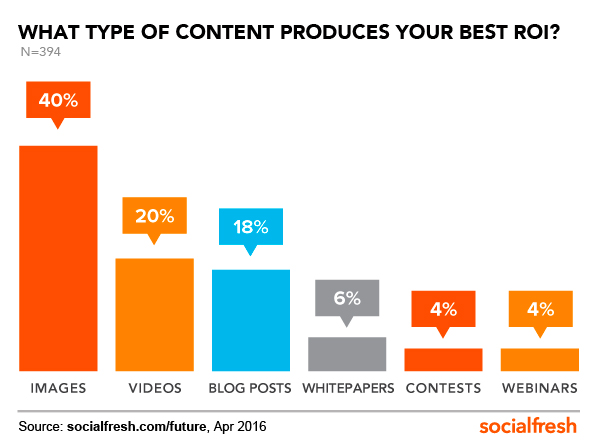
Image via SocialFresh
Reason enough to incorporate video as part of your brand strategy, right?
Related: From Zero to Hero; How To Become a Must-Have Brand
As a practical example, let’s take a look at Code.org[5], whose success is attributed to one smart video that happened to go viral…
Code.org, a nonprofit committed to bringing computer science education to all children, was founded in 2013.
In the video, co-founders Ali and Hadi Partovi interviewed the world’s top entrepreneurs, like Bill Gates and Mark Zuckerberg. They were questioned about their early experiences with computer programming.
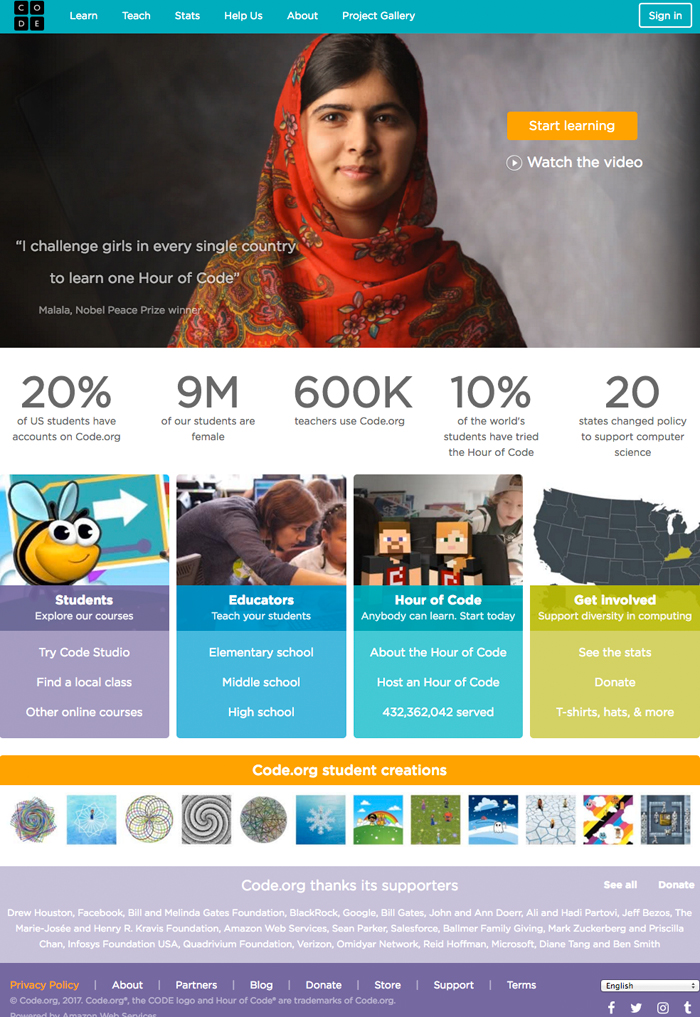
Image via Code.org
The interviews were edited down to a five-minute clip with the purpose of inspiring a new generation of coders and teachers.
The video, titled “What Most Schools Don’t Teach,” reached the number #1 spot on YouTube on its very first day. As a result, 15,000 schools reached out to Ali and Hadi for help after the video went live.
Today, just a few years later, Code.org boasts 15 million student accounts with 10,000 additional created every day.
Being a small non-profit, and to keep expenses down, the videos they distribute today showcase their staff instead of paid actors.
Have a look at their first video which launched their nonprofit:
What separates them from other struggling non-profits, is their strong brand vision which is carried out in everything they do.
Code.org’s brand strategy development has always been simple and consistent: it is to be inspirational to students (the video that went viral certainly is, providing motivation and inspiration to thousands), to “think big but act small”, to be personal, transparent, thankful and community-based. They are good at demonstrating their brand values in clear video brand messages.[6]
Related: Brand Profiling, How Brand Performance and Purpose Are Inextricably Linked
To Use Video To Share Your Brand Message You Don’t Have to be Bill Gates
To use video in your brand message does not mean you have to have the pockets of a Bill Gates. Anyone with a smartphone that can record a video has the means of video marketing!

Image via MarketingWeek
Many small businesses have successfully gained traction with video in various, affordable ways, like:
- Featuring their own employees
- Using their leaders
- Interviewing their customers
- Building brand stories
Related: Brand Stories: 5 Compelling Examples That Sell Themselves
A great example of affordable, but wildly popular branded videos, is Catmantoo who for one of the owner’s videos, got a whopping 7,858,920 views.
Catmantoo is owned by Robert Dollwet, a solopreneur who has no website but shoots videos that people love. They are actually ads, but you wouldn’t know it, which is precisely why they’re so popular. Robert sells all of seven products from his Facebook page[7] which has an extraordinary 959,145 likes:
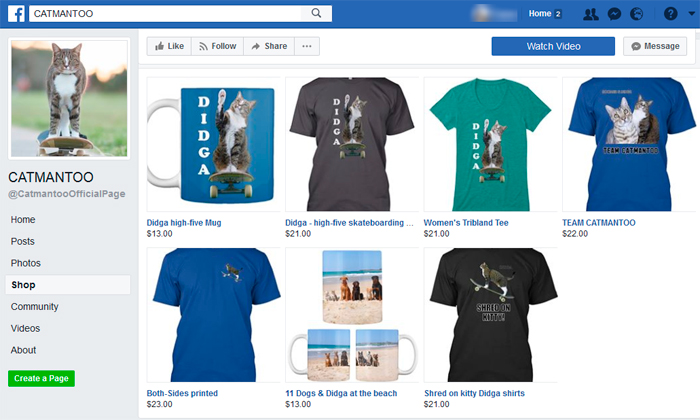
Image via Catmantoo
This entrepreneur uses the animals he trains to make entertaining videos. It’s pretty clear that his online success and cute cats are tightly intertwined; strong personality, compelling storytelling and clever brand strategy which achieves results. All his videos tell a story and then only briefly at the end, mentions Robert as the trainer of all the animals involved. Clever!
Discover how to build your stand out, customer attracting brand personality here so you can grow your business more profitably and faster.
You can demonstrate your product or services and broadcast your brand message just as effectively by video too. The key for video is either to add value, touch hearts or be entertaining because it’s only when you emotionally engage people positively that you’ll move them to buy.
Even the more traditionally conservative B2B service sectors can get it right, just like Taulia[8] who provides a cloud-based invoice, payment, and dynamic discounting management solutions. In a niche not widely recognized for blazing creativity, they’ve managed to carve a place for themselves by building a strong brand personality, creating entertaining videos that become beloved to their primary customers.
Related: Use Humour in Branding to Create Strong Emotional Bonds so You Increase Sales
In amusing worst-case-scenarios, Taulia demonstrates by video what can happen when you don’t use their services, not only giving a laugh but providing a humorous take on a serious B2B solution. Their videos build a connection between their customers, their brand and their company. Their videos have pushed them above their less creative competitors so they stand out and attract their ideal audience.
The proof is in the results – this brand attributes more than $125M[9] in their marketing pipeline to video content, and found that 45% of all closed-won deals had involved prospects watching their videos.[10]
The lesson here is that Taulia creates videos that appeal directly to its target audience. Bhaji Illuminati, Senior Marketing Manager explains, “Rather than trying to make one video that appeals to the entire world, we’ve learned that we can get stronger results by making many videos that appeal to specific audiences.”[11]

Image via MarketingWeek
Their primary branding strategy is to use humour and infuse personality into communications in order to deliver what might otherwise, in another format, be perceived to be a bit heavy going or not get noticed at all by their target audience. With your phone, you can also use Facebook Live to host a live video broadcast, similar to a webinar, to your primary audience and followers and make it a highly interactive experience.
Conclusion
If other entrepreneurs and small business owners have accomplished great success sharing their brand message through videos, so can you. All you need is a smartphone, good planning and a clear, well-developed brand strategy. Find out more about how you can build your brand here.
Questions to consider
- How can you inject vibrant personality into your brand message using video so it stands out and attracts your ideal customers?
- What would your brand look like if it was a store in a mall, what are its key stand out elements to attract your ideal customers and how can you convey that in a video?
- What are the key factors you need to integrate with your brand strategy to increase your sales?
Want to develop your brand so you can increase your profits but you’re not sure where to start to get a successful return on your investment?
If you want direction and support empowering you to transform your brand so it increases your sales then the Persona Brand Building Blueprint™ Mastermind is the perfect fit for you.
This is a two-day brand building intensive shared with a small group of like-minded peers where you work on your brand with our leadership. In fact, over the two days, you reevaluate your brand, codify it and create your brand strategy from the ground up whether you’re revitalising an existing brand or creating a new one.
This is a highly empowering workshop where we take a deep dive, step-by-step into how to build a brand. You discover and apply the systems and methodologies used by some of the world’s greatest brands as you work on your brand under Lorraine Carter’s direction and tutelage so you can grow your own brand and business.
This is not a theory based programme but a highly interactive fast-track course where you work intensively on your brand throughout the programme duration using our ten step system to:
- Completely re-evaluate your brand to make it much stronger so it’s highly visible enabling you to increase your profits
- Map out your brand in full so it’s codified and comprehensively documented to grow your business faster
- You leave with your total brand road map or GPS of your brand empowering you to manage your brand, stand out and attract your ideal customers so you multiply your sales
Outcome: Your brand transformed so you can increase sales.
At the end of the two-day Persona Brand Building Blueprint™ Mastermind you leave with your fully documented brand strategy ready for implementation in your business or organisation.
If your team is larger and you’d like to include everyone’s’ participation in the Persona Brand Building Blueprint™ Mastermind then we also run in-house private client brand building intensives tailored to your specific needs too.
Just drop us a line to [email protected] or give us a call T: +353 1 8322724 (GMT 9:00 – 17:00) to discuss your preferences and we’ll develop your brand building intensive bespoke to your particular brand requirements so that you’re empowered to develop your brand and take your business further a lot faster.
[1] https://www.websitemagazine.com/blog/5-reasons-visitors-leave-your-website
[2] https://blog.hubspot.com/marketing/video-marketing-statistics
[3] https://blog.hubspot.com/marketing/video-marketing-statistics
[4] https://www.ibm.com/think/marketing/social-keeps-mobile-marketing-tactics-current/
[5] http://www.code.org
[6] https://code.org/about/values
[7] https://www.facebook.com/pg/CatmantooOfficialPage/shop/?ref=page_internal
[8] https://taulia.com/en/
[9] http://www.dmnews.com/marketing-strategy/taulia-a-b2b-brand-with-a-strategic-approach-to-video-marketing/article/345971/
[10] https://www.clickz.com/b2b-companies-can-buck-the-norm-and-win-big-in-marketing/26174/
[11] https://www.vidyard.com/blog/how-taulia-became-a-video-marketing-powerhouse/
Strategic Brand Partnerships: Does My Brand Look Big in This?
/0 Comments/in Brand Collaboration, Brand Partnerships, Brand Personality, Brand Positioning, Brand Profiling & Positioning, Brand Strategy, Co-Branding, Partnership Branding, Strategic Partnerships /by Lorraine CarterIn branding, it turns out that bigger is better together. In successful strategic brand partnerships, the branding strategy of two plus two can equal five…or more!
Before jumping into bed together, several questions need to be asked – and answered. It’s essential to be clear and consistent about your values and your vision and to bring that conviction to the relationship from the start.
“Relationships between companies begin, grow, and develop—or fail—much like relationships between people”. – Harvard Business Review[1] |
Objectives of Strategic Brand Partnerships
Strategic brand partnerships are a “win-win” for both parties, delivering a great return on investment when done well while reducing marketing spend internally. It’s important to develop SMART* goals though and a plan for tracking and measurement of ROI in advance.
Partnering with the right business achieves:
- Brand recognition
- Increased visibility
- Inherited reputation
- Validity and credibility
- A pathway to an expanded target audience
“No matter how brilliant your mind or strategy, if you’re playing a solo game, you’ll always lose out to a team.” |
* Watch for an upcoming post covering SMART objectives for brand awareness.
10 Things Brands Must Look for in The Right Brand Partnerships
Successful brand partnerships between smaller and larger or better-known brands can work when there are mutual gains and wider distribution to be achieved by both brands. Both partners must examine the opportunity for synergy by first reviewing each of the following:
- Common brand values
- Complementary brand cultures
- Core competencies
- Mutual benefits; a “win-win”
- Alignment between products or services
- Enriched customer experiences
- Articulation of a clear brand road map
- Resources available
- Ability to reach a wider customer audience
- Mutual trust
If your brand is the smaller partner in the relationship then you need to ensure you have your brand fully codified and mapped out so you can critically evaluate who would potentially be a good partner for you.
Ensuring your brand is properly profiled with its personality, positioning and purpose fully articulated and documented means you’re also more fully equipped on an equal footing to engage with the larger player because they will have all their brand essentials including their brand guidelines fully documented so you want to level the playing field before approaching the deal!
If you want some direction developing your brand and your brand partnership strategy then take a look at our brand building programme called the Personality Profile Performer™. This online course takes you through all the key steps you need to implement in building your brand. You can watch a free course preview here.

Build Your Stand Out Customer Attracting Brand Using The Personality Profile Performer™ Programme with Lorraine Carter
Alternatively, if you want in-person professional direction with expert input to develop your brand and brand partnership strategy and would like to discuss working with us then give us a call T: +353 1 8322724 (GMT hours 9:00-17:00) or drop us a line to [email protected]. We’d be delighted to talk with you.
Related: How to Use Brand Positioning to Build Brand Impact in an Overcrowded Market
Successful Mixed-Size, Mixed-Use Brand Partnerships
Sometimes a brand partnership appears unlikely at first glance. A beverage and a nail polish; a social network and an airline; a music app and yogurt. How and why are these brand partnerships workable? Or even utterly brilliant?
The biggest innovation in media prize went to Burger King when the fast food brand sassily and publicly pitched McDonald’s. The much bigger, better funded golden arches folks declined to co-brand “McWhopper” for a day. Let’s take a closer look at each example.
| PARTNER 1 | PARTNER 2 | BRAND 1 | BRAND 2 |
| Destination | Satellite & Cable TV | NYC & Co. | Nickelodeon |
| Top end designer | High Street retailer | Karl Lagerfeld | H&M |
| Music app | Yogurt | Spotify UK | Danone “Light & Free” |
| Social network | Museums | UNESCO #Museum Week | |
| Soft drink | Nail varnish | Coca-Cola | OPI |
| Online dating | Airline | Tinder | Delta Air Lines |
| Ride Share app | Fast food giant | Lyft | Taco Bell |
| Fast food giant | Fast food giant | McDonald’s | Burger King |
Related: Co-Branding: 13 Tips for Growing Your Brand Through Strategic Partnerships
Take a look at these brand partnerships a bit more closely because there are valuable learnings and takeaways you can apply to grow your business too.
NYC & Co. | Nickelodeon
Brand Partners:
NYC & Company, New York City’s official destination marketing organization, announced Nickelodeon’s Teenage Mutant Ninja Turtles will continue their role in 2017 as Official NYC Family Ambassadors. The co-branded national ad campaign highlights New York City as a family-friendly destination. Its activation allows visitors to pick a turtle to explore a topic.
Why It Works:
It’s fun. A popular, compelling cartoon family become the official brand ambassadors and tour guides for real families who make up about one-third of NYC’s 60 million annual visitors. The campaign’s activation allows kids to pick a turtle to explore a content topic.
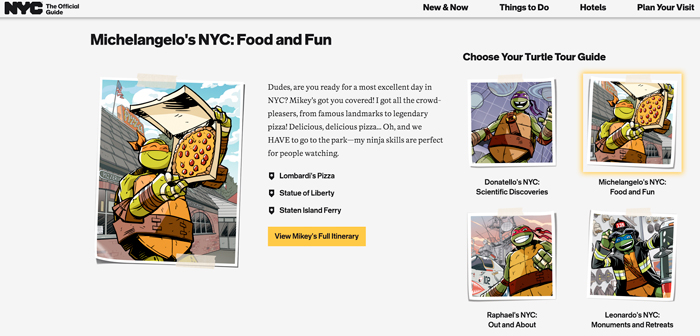
Image via nycgo – NYC Turtles
Related: Personality Matters, Bringing Your Brand to Life to Grow Your Profits
Karl Lagerfeld | H&M
Brand Partners:
The collaboration that changed everything is revived once or twice a year with other top-end designer brands. It seemed incredible when introduced in 2004[3], a partnership between Karl Lagerfeld, haute couture fashion icon, and a mass market clothing chain. The in-store collection that was meant to last two weeks sold out to frenzied shoppers in 25 minutes in many of the retailer’s 1,000 locations.[4]
Why It Works:
Initially shocking, now it’s cool to make luxury apparel affordable. Both brands have reached new markets. The choice of designer is kept quiet in advance, and the collections’ resale market is as vibrant as the pieces that fly out the doors on opening day.
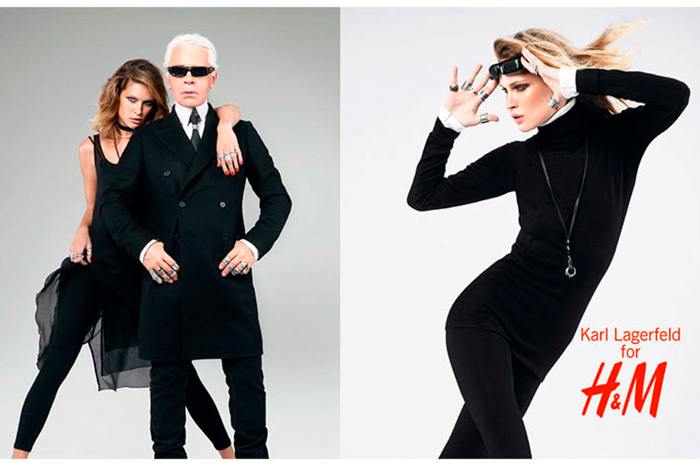
Image via Harper’s Bazar UK
Spotify | Danone
Brand Partners:
What does yogurt sound like? Danone signed a year-long deal to associate its ‘Light & Free’ brand with Spotify ‘Chill’ moments, targeting listeners, artists, and influencers to create chillout playlists with ads for yoghurt.
Why It Works:
Pairing up products with moods resembles the way music reflects moods. Both brands suggested that consumers “really enjoy the feeling of ‘Light & Free’ at first hand.”
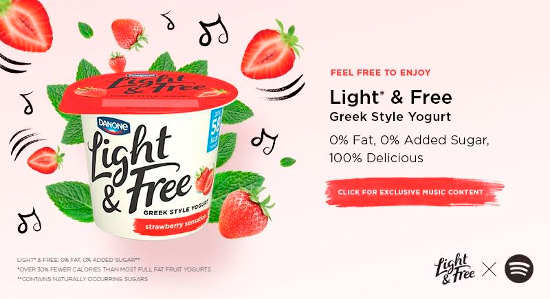
Image via Event Magazine, Danone, Spotify
Twitter | Museum Week
Brand Partners:
The first-ever #MuseumWeek launched in 2014 with Twitter as a partner. Hundreds of cultural institutions and heritage landmarks across Europe tweeted out 140-character bursts of inside information, facts and trivia to promote sharing and pique curiosity. Powered by UNESCO, it’s an annual success.
Why It Works:
Nobody gets museum fatigue. Twitter is the perfect partner for pumping out fascinating, compelling conversation-starter tidbits: “Did you know a bluestone weighs 2 tons, the same as 22 sheep?”
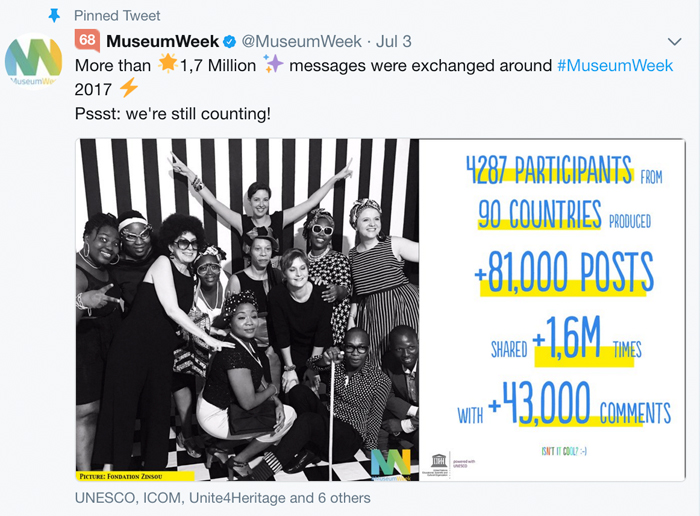
Image via Twitter
Coca-Cola | OPI
Brand Partners:
Paint your nails a flavour? Coca-Cola Red, of course. ABC News reported, “It may seem like an oddball pairing, but the connection between Coca-Cola and beauty products is not unprecedented…Coca-Cola said that partnerships with nail polish and lipstick brands actually date back to the 1940s. More recent products include Bonne Bell’s Coca-Cola flavoured lip balms.”[5]
Why It Works:
Both brands are pitching happiness in a bottle to an important female customer segment. For the nail polish, the association says, “I’m a classic.” For Coca-Cola, the association says, “I’m hip and happening.”
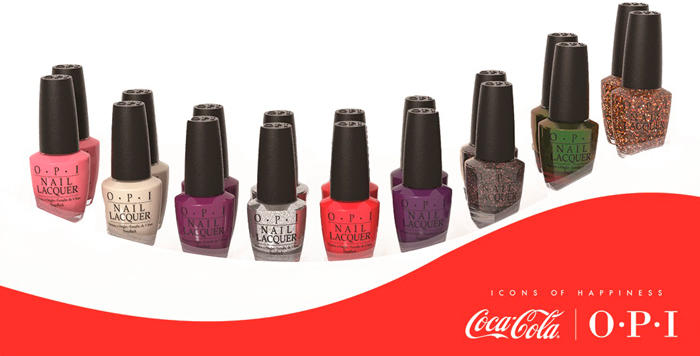
Tinder | Delta Air Lines
Brand Partners:
Delta’s promotional partner Tinder says, “World travellers are more likely to be swiped right.” On their Facebook page, AdWeek proclaims “Bravo, Delta.” The creative teams painted famous international landmarks on a Brooklyn, NY #DeltaDatingWall for selfies.
Why It Works:
Because travel is a turn-on. Because selfies are instantly shareable. And because data supports the validity of the claim. Both partners reach a prime customer audience in a densely populated, trendy neighbourhood.
- 62 percent of men and 74 percent of women want a partner who shares their travel interests
- 1 in 2 singles say travelling is one of their favourite things to do
- 1 in 2 singles say travelling to a new city to meet a date would be exciting
- 1 in 3 singles ranked travel as a top priority in 2017
- 57 percent of singles take 1+ vacations year
- 1 in 3 singles try to go somewhere different for vacation every time they travel
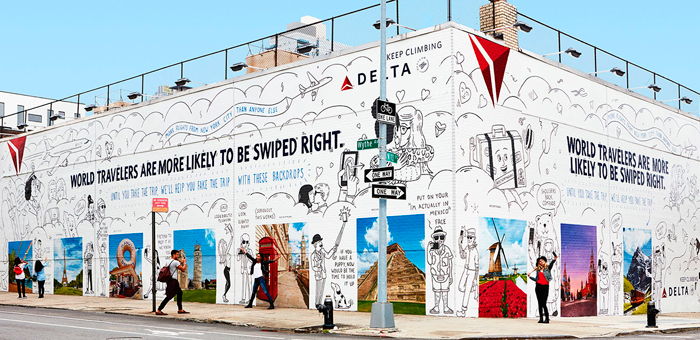
Image via AdWeek
Lyft | Taco Bell
Brand Partners:
Lyft (a Uber competitor) is partnering with Taco Bell to satisfy your late night hunger pangs. Taco Mode encourages Lyft riders to make a pit stop at a California Taco Bell fast food location for a free Doritos Locos Taco before reaching their final destination. Request to be collected in a Taco-themed car between 21:00 p.m. to 2 a.m.
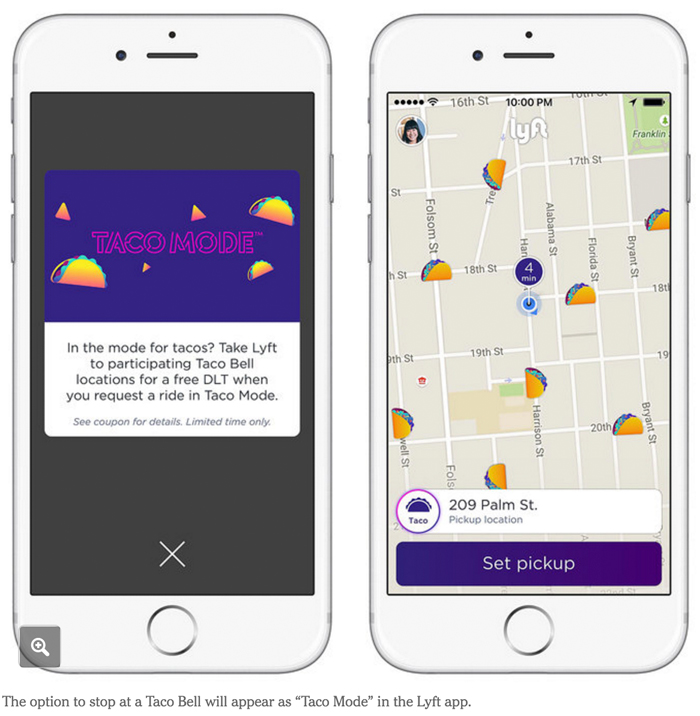
Image via New York Times
Why It Works:
The emphasis is squarely on the customer experience. Taco Bell tells the New York Times[6] this partnership represents a new type of “experience innovation,”[7] delivering customers to the food instead of vice versa.
McDonald’s | Burger King
In the best partnership that never happened, Burger King got everyone talking when they publicly proposed a ceasefire on burger wars in an open letter to McDonald’s. In full page ads, Burger King suggested a hybrid McWhopper to mark World Peace Day. While McDonald’s rejected the tongue-in-cheek partnership, BK’s 2016 print campaign won a Grand Prix at the Cannes Lions festival. (Just what Burger King wanted: Attention!)
Related: Use Humour in Branding to Create Strong Emotional Bonds so You Increase Sales
SMEs and Co-Branding – Leverage These Brand Partnership Ideas to Grow Your Business
Strategic partnership brand strategy can be especially fruitful for startups and small-to-medium sized companies that find the right collaborator in a bigger brand. By engaging with a like-minded big brand buddy, a smaller brand can build traction, momentum, and credibility while stretching their branding budget.
This works especially well when a bigger brand is launching in a new market, hence it must behave like a small brand, as there’s not yet brand awareness. Carabao Energy Drink was unknown when it was recently introduced in Europe while enjoying a strong second place standing in its category in Thailand with 21 percent market share.
However, small and big isn’t an exclusive combination solution. Two small brands or two big brands can also support one another very effectively as evidenced here in the four case studies detailed below.
| PARTNER 1 | PARTNER 2 | BRAND 1 | BRAND 2 |
| Energy drink | Sports teams | Carabao Energy Drink | English Football League |
| Online dating | Dining app | Match.com | Grub Club |
| Destination | Bank | Tourism Authority of Thailand | Krungthai Bank |
| Supermarket chain | TV show | Coles (Australia) | MasterChef (Australia) |
Related: From Zero to Hero, How to Become a Must-Have Brand
Want to develop your strategic partnerships branding strategy so you can grow your brand awareness, increase your sales, expand your market reach but you’re not sure where to start to get a successful return on your investment?
Just drop us a line to [email protected] or give us a call T: +353 1 8322724 (GMT 9:00 – 17:00) — we’re here to help.
If you want direction and support transforming your internal branding strategy so it empowers your team and increases sales then the Persona Brand Building Blueprint™ Mastermind is the perfect fit for you.
This is a two-day brand building intensive shared with a small group of like-minded peers where you work on your brand with our leadership. In fact, over the two days, you reevaluate your brand, codify it and create your brand strategy from the ground up whether you’re revitalising an existing brand or creating a new one.
This is a highly empowering workshop where we take a deep dive, step-by-step into how to build a brand. You discover and apply the systems and methodologies used by some of the world’s greatest brands as you work on your brand under Lorraine Carter’s direction and tutelage so you can grow your own brand and business.
This is not a theory based program but a highly interactive fast-track course where you work intensively on your brand throughout the programme duration using our ten step system to:
- Completely re-evaluate your brand to make it much stronger so it’s highly visible enabling you to increase your profits
- Map out your brand in full so it’s codified and comprehensively documented to grow your business faster
- You leave with your total brand road map or GPS of your brand empowering you to manage your brand, stand out and attract your ideal customers so you multiply your sales
Outcome:
Your brand transformed so you can increase sales.
At the end of the two-day Persona Brand Building Blueprint™ Mastermind you leave with your fully documented brand strategy ready for implementation in your business or organisation.
If your team is larger and you’d like to include everyone’s’ participation in the Persona Brand Building Blueprint™ Mastermind then we also run in-house private client brand building intensive programmes too.
Ring us to discuss your brand building preferences
Just drop us a line to [email protected] or give us a call T: +353 1 8322724 (GMT 9:00 – 17:00) to discuss your preferences and we’ll develop your brand building intensive bespoke to your particular brand requirements so that you’re empowered to develop and lead your internal brand building team.
Related: How Do Challenger Brands Become Market Leaders?
Carabao | English Football League
Brand Partners:
Carabao is a Thai energy drink with good market share. However, the brand was unknown in the UK, part of its European launch. Carabao is a principal partner of both Reading FC and Chelsea FC.
Why It Works:
Pro sports and energy drink are an obvious dynamic pairing. The English Football League and its 92 member clubs got a shot of adrenaline when Carabao signed on for three years of title sponsorship. Carabao got instant brand recognition as a major player in its new territory.[8]
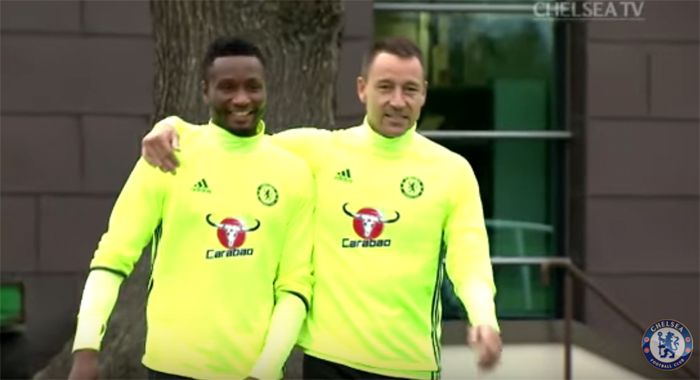
Image via Chelsea FC TV
Match.com | Grub Club
Brand Partners:
Grub Club connects chefs with underused spaces for pop-up dining. Diners are delighted by quality food in quirky places. The supper club startup was founded in London in 2013. Grub Club hosted an après ski-themed evening with Match.com, one of the largest dating sites.
Why It Works:
Dinner = Date Night. Even if it’s over the top for a first date, Grub Hub engages with an established like-minded web-based company that acts as a big brand buddy, helping them build brand momentum and credibility. The bigger brand gets access to a closely aligned niche.
“Very few startups have any marketing budget so the only way to get your brand out there is by setting up strategic partnerships with companies big and small.”[9] – Siddarth Vijayakumar, Co-founder of Grub Club |
Related: The Case for Brand Disruption, Be The Disruptor or Be Defeated
Tourism Authority of Thailand | Krungthai Bank
Brand Partners:
Medical tourism meets beach holidays. The largest bank in Thailand partnered up with the national tourism office to promote the destination for people who combine treatment with travel.
It’s a large and growing international trend, and Thailand is a leader in the market.
Why It Works:
A health and wellness website[10] highlights popular treatments available in Thailand as well as providers. The bank offers tourists the Miracle Thailand Card, a free visitors’ debit card that carries some medical and life insurance coverage and is accepted at 286 hospitals.

Image via Thailand Tourism
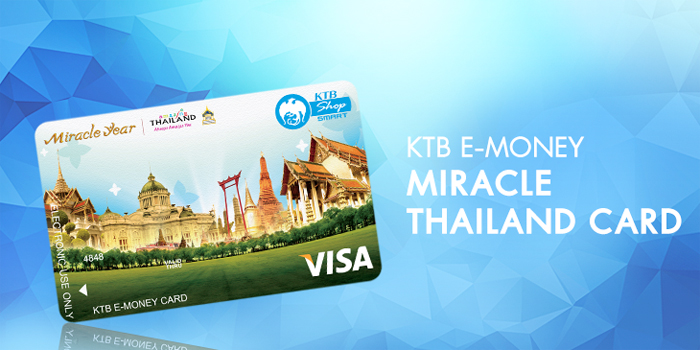
Image via Krungthai Bank
Related: Brand Management: Top 10 Tips for Managing Your Brand Reputation
Coles | MasterChef
Brand Partners:
Business surged when the Western Australian supermarket chain launched “To cook like a MasterChef cooks, shop where a MasterChef shops” as a campaign tied to recipes used on the reality TV show.
Why It Works:
How about a 30 percent uptake overnight in the meat sales for a MasterChef beef stroganoff dish?[11] From spices to cooking equipment, the grocery store chain says revenue is soaring. For MasterChef, the positive impact on expanded viewing audiences tuning in for the next bright cooking idea is built right into this “win-win” partnership. After all, everyone regularly goes grocery shopping.
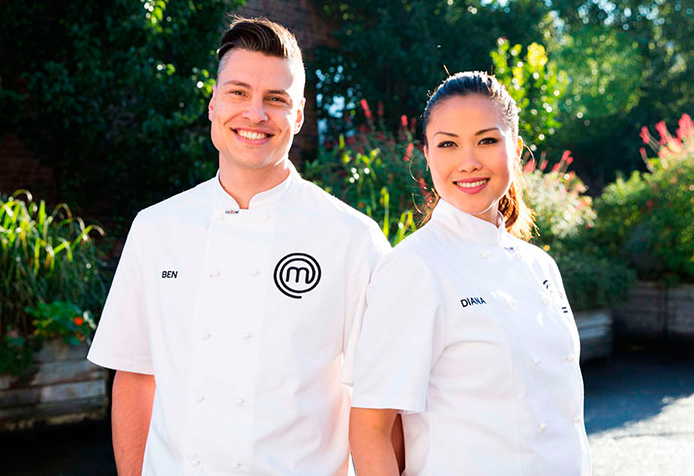
Image via TenPlay TV MasterChef
So the question is, have you considered strategic brand partnerships to increase your brand awareness, market reach and sales? Scale and size is not an excuse because this is a brand strategy open to large and small with innovative thinking — once you have a few fundamentals in place, like codifying your brand as previously mentioned.
Consider Strategic Brand Partnerships to Increase Your Customer Base and Grow Your Sales Fast
- Do you have a marketing budget dedicated to brand partnership opportunities?
- Do you have clear objectives in mind for a potential co-branding campaign?
- Do you have one or more potential co-branding partners in mind for your business?
- What innovative co-branding or brand partnerships have impressed you lately?
Related: Brand Profiling, How Brand Performance and Purpose Are Inextricably Linked
[1] https://hbr.org/1994/07/collaborative-advantage-the-art-of-alliances
[2] https://www.forbes.com/sites/danschawbel/2012/02/14/10-memorable-quotes-from-the-start-up-of-you/#1b2295315b3c
[3] http://about.hm.com/en/media/news/karl_lagerfeld_and_hm.html
[4] http://wwd.com/fashion-news/fashion-features/truly-fast-fashion-h-m-8217-s-lagerfeld-line-sells-out-in-hours-593089
[5] http://abcnews.go.com/Lifestyle/coca-cola-manicure/story?id=23713099
[6] https://www.nytimes.com/2017/07/25/business/media/lyft-taco-bell.html
[7] https://www.youtube.com/watch?v=brJoJlRu_0Y
[8] https://www.youtube.com/watch?v=DBggju4mBGE
[9] https://www.marketingweek.com/2014/02/12/start-ups-and-big-brands-join-forces-for-mutually-beneficial-partnerships/
[10] http://thailandmedtourism.tourismthailand.org
[11] http://www.theaustralian.com.au/business/media/masterchef-sparks-coles-sales-surge/news-story/e6ef72e4b4f1793a9bd453fc7936970d
The Impact of Company Brand Culture On Driving Performance and Increasing Sales
/2 Comments/in Brand Culture, Brand Experience, Brand Innovation, Brand Loyalty, Brand Positioning, Brand Profiling & Positioning, Brand Refresh, Brand Relaunch, Brand Revitalisation, Brand Values, Rebranding /by Lorraine CarterMost leaders and employees would view company brand culture as a crucial part of job performance and satisfaction coupled with great customer service, yet for so many brands it remains an elusive concept.
We all know intuitively that a bad company culture produces bad results and there are plenty of statistics to back this up. One Columbia University study shows that the probability of job turnover when a brand’s company culture is poor is 48.4%, compared to just 13.9% when the brand culture is perceived as a good one.[1]
In fact, good corporate brand culture fundamentally drives financial performance as evidenced by the research published in the book ‘Corporate Culture and Performance’ by HBS Professor James Heskett and Kotter International[2]
| GROWTH | Average Increase for Twelve Firms with Performance-Enhancing Cultures | Average Increase for Twenty Firms without Performance-Enhancing Cultures |
| Revenue Growth | 682% | 166% |
| Employment Growth | 282% | 36% |
| Stock Price Growth | 901% | 74% |
| Net Income Growth | 756% | 1% |
“Great companies that build an enduring brand have an emotional relationship with customers that has no barrier. And that emotional relationship is the most important characteristic, which is trust.”
Howard Schultz, Starbucks
Culture matters because it’s about transparency, company behaviour, what you stand for, who you are. Brand Culture is how you convey, share, and translate that into your brand. It’s what every employee believes, does, and lives to express that culture.
Brand culture is driven by the fundamentals of your brand profiling i.e. what your brand stands for, it’s personality, mission, vision, values, purpose and way of doing things.
It’s about building a relationship between your culture, which may be developed over time but should ideally be guided from the top, the founder, owner or CEO — the visionary behind the brand — and your brand itself in terms of its personality, how it does things, the customer experience it creates and what it stands for. How you develop them to create a strong positive and distinctive brand experience.
Related: CEO Brand Leadership, How Vision Drives Brand Growth
There are also bad cultures within businesses and organisations which are not positive brand experiences. These poor brand cultures undermine performance, productivity, the whole perception of the organisation, the brand and negatively impact sales.
Our experience working with many different companies and organisations across diverse sectors clearly illustrates that it’s not that they haven’t considered company brand culture, it’s that developing and implementing something perceived to be so abstract can be difficult.
Related: Top 10 Brands for Customer Experience and What You Can Learn From Them
Because of this apparent client challenge we’ve pulled together some tangible ways you can start working on and developing your brand culture together with case studies from worldwide brands to show you ‘brand culture’ in action in the ‘real world’.
They’re brands who, like us, understand that building culture is not about placing a ping-pong table in a rec room, it starts with strong brand values that respect your employees and customers alike.
12 Ways To Improve Your Company’s Brand Culture so You Increase Performance and Grow Sales
1. Don’t be Afraid to Mix Marketing with People
Based in Kansas and proud of its community roots, CornerBank, now part of RCB Bank, describes itself as the bank that is “on your corner and in your corner”.[3] Their approach to culture and marketing lies in people, something which RCB Bank is trying to emulate since their merger last year.
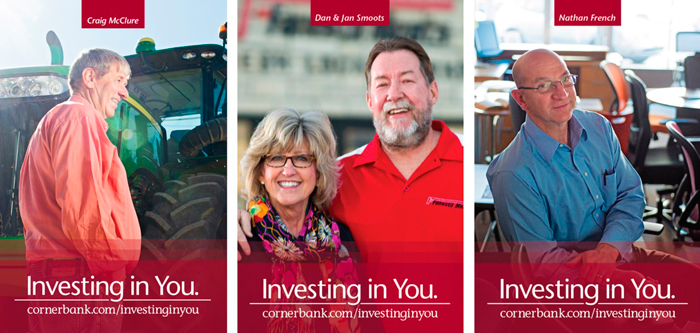
Image via CornerBank
CornerBank practised what they preached by combining the head of HR and the head of marketing into one role because their “people are their best marketing tool”.[4] While it’s undeniably an unorthodox way of structuring a company, in doing so, they put faith in their staff, and most importantly, their staff’s commitment to upholding those community roots. It’s a company that looks out for the little guy and ensures that its employees identify strongly with this.
2. Bridge the Gap Between Employee and Customer
With a client retention rate of a near-perfect 97.8%, bank and insurance provider, USAA is one of the most reputable and trusted brands in America.[5]
They have a unique proposition in that the vast majority of their customers are active or retired US military. No one knows their customer better than USAA and the company instils this in their employees by training them in the experiences of a soldier.[6]
This works in two ways. Firstly, for company culture, it gives employees insights that help them do their job better, which improves job satisfaction, and challenges them in the right way. And secondly, it shows customers that their experiences are genuinely important to the brand as a whole, but also that the people who they reach out to for service are much better equipped to deal with their situation. For soldiers trying to do their banking from war zones, that is often a pretty unique one.
3. Foster Fun and Creativity
When you think of best practice company culture, tech companies tend to come to mind. They seem to understand the important connection between having fun and innovating. Squarespace embodies many of the principles of best practice company culture – an attractive office space, very few levels of management, celebrations, downtime and flexibility.
What’s important here is that these practices stem from the company’s respect for its employees. This is the approach we take when we are working with clients. Downtime and flexibility show employees that they are respected enough to get on with their job and exercise a certain amount of autonomy.
Related: Use Humour in Branding to Create Strong Emotional Bonds so You Increase Sales
The fun aspects of this company’s culture are layered on top of this to let employees know that their work is appreciated. This two-pronged approach ensures that your company brand culture is engrained as a real living experience for everyone and not just lip service.
4. Offer Flexibility
Flextime is not a particularly new concept, and you’ll find it especially prevalent in public service organisations and progressive companies in western countries. Because of this, extensive research has been conducted to measure the value of offering this to your employees.
A survey conducted by The Alternative Board (TAB), an international provider of executive peer advisory boards, of hundreds of business owners, found that business owners who thought that their company culture was ‘strong’, also offered their employees flexible conditions, particularly in terms of time and remotely working.[7] We tend to find that when workplaces concentrate on results, project completion, and quality of work, the perceived ‘drudgery’ of the 9-5 work culture is eliminated, and employees feel part of something bigger which engenders a greater sense of job satisfaction.
Medium-sized British activewear company, Sweaty Betty, embodies these principles by using open communication and showing that they understand their employees have life commitments in addition to their work ones. “We trust our team and operate on a flexi-hour policy,” says Jessica Howden, people and events coordinator. “If a team member would rather leave earlier in the afternoon because of a long commute, they can start earlier in the morning. Our working hours are not set in stone.”[8]
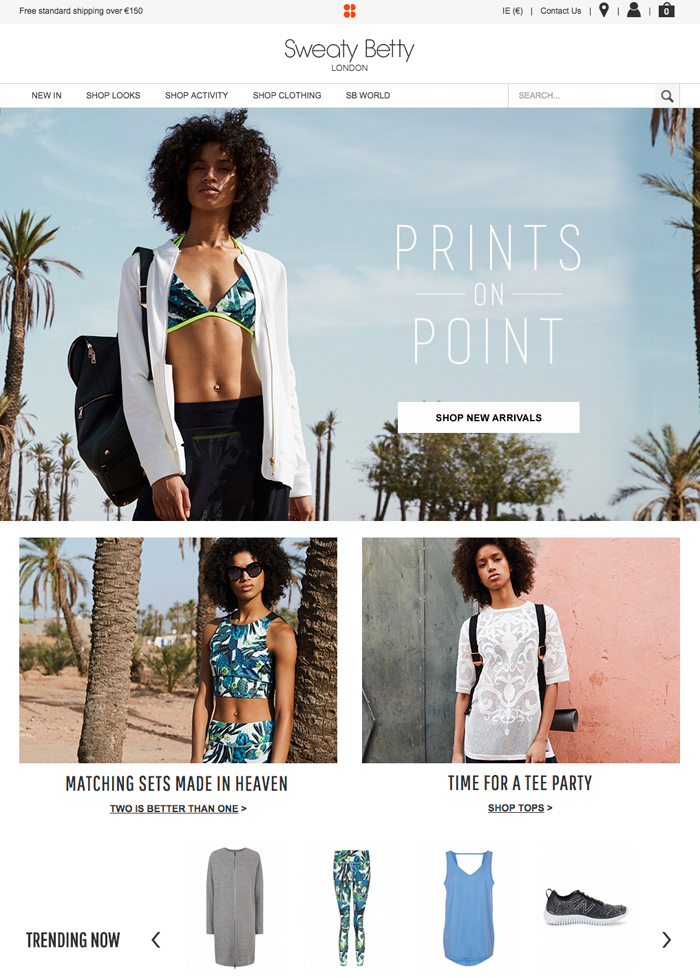
Image via Sweaty Betty
5. Build Brand Relationships to Create Community
Ask any social scientist, the key to happiness among employees in a workplace is when they feel like they are part of something bigger that makes a difference. Apple and Nike exhibited this in their September 2016 keynote where they teamed up to introduce the second-generation Apple watch. This is a watch that allows people to be part of two tribes – the Apple tribe, and the Nike Running Club tribe.
Aligning with another brand that commands respect and complements your brand values and positioning promotes inclusivity in your workplace and makes your employees feel like they are part of something larger than themselves. It also strengthens your brand in the mind of your customer and leads to commercial growth – advocates of one brand will be more likely to become advocates of the other when they are aligned.
When we work with companies to identify co-branding opportunities, having a strong brand culture or value fit is essential. Some of the most effective brand collaborations and alignments are not even necessarily in the same industry. This can yield great results for SMEs where the primary focus is to stand out, increase brand awareness with sales and reach new audiences.
Related: Co-Branding, 13 Tips for Growing Your Brand Through Strategic Partnerships
6. Hire ‘Your’ People
Traditional recruitment is generally based on skills and experience. Our approach to recruitment for your brand is to ascertain a baseline level of aptitude that you would consider mandatory, and place more emphasis on finding a suitable fit with your organisations brand culture.
Recruitment companies, such as New Zealand-based company, Weirdly, take an innovative approach to recruitment using a series of tactics to assess a potential employees culture fit before they even get to the interview phase. In doing this, you create a workplace where people feel a sense of belonging, as well as the crucial creation of an environment where ideas can be shared.
7. Employees as Brand Ambassadors
As we’ve mentioned, most companies will try to hire employees who reflect and embody their company’s values in some way. Increase engagement with your brand and create authentic communication by making it attractive for your employees to become brand ambassadors.
According to the 2016 Edelman Trust Barometer “Employees rank higher in public trust than a firm’s PR department, CEO, or Founder. 41% of us believe that employees are the most credible source of information regarding their business.”[9]
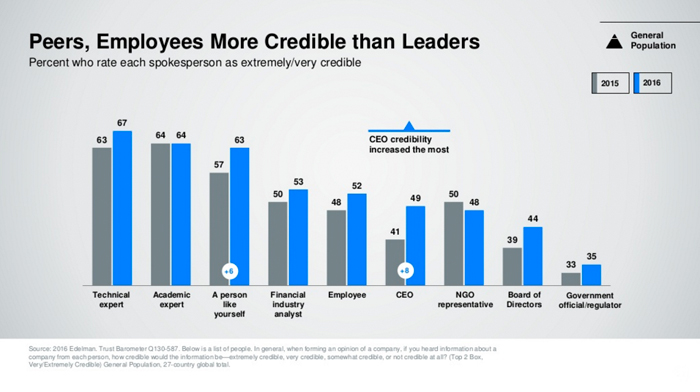
Image via Edelman Insights
We believe that this likely stems from the perception that employees are much more likely to voice their honesty, particularly if they are disgruntled. An employee that is openly endorsing a company is viewed as a trustworthy and reliable opinion. Social media is a great platform to try this on. Creating environments where employees feel compelled to share the goings-on of their workplace on their personal channels speaks volumes, and is a great place to start.
American-based retailer, Zappos, has an infamous reputation for its focus on employee culture. “At Zappos, we really view culture as our No. 1 priority. We decided that if we get the culture right, most of the stuff, like building a brand around delivering the very best customer service, will just take care of itself.” Tony Hsieh, CEO, Zappos–January 9th, 2010, The New York Times[10]
Related: Brand Sponsorships: The Best Brand Ambassadors Are Already On Your Payroll
8. Give Your Audience a Sneak Peek into Your Culture
In a similar way, don’t be afraid to shed a little light on how great your company is behind the scenes. Doing so increases your brand value with your customers and gives employees a public reason to feel proud of where they work. Your customers could also be your potential employees.
Just ensure that what you are posting accurately reflects your brand values as a company and how you want people to perceive it. ASOS is a great example of this – they use their Instagram account to provide sneak peeks into their workplace culture. It injects personality into the brand and shows that they value their employees.
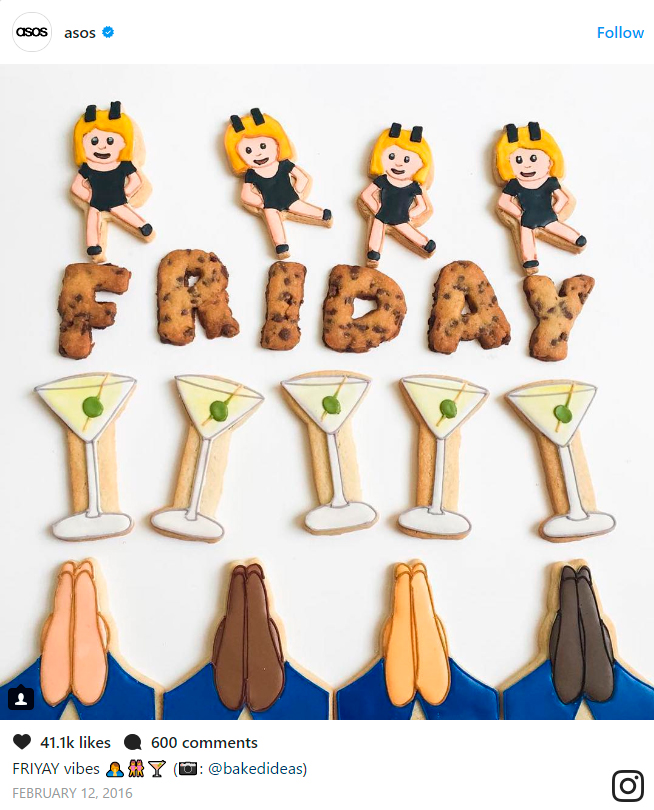
Image via ASOS on Instagram
9. Remove Restrictive Hierarchies
Hierarchies are a particularly tricky area of company politics to navigate. We tend to look at hierarchies not from a ‘have them/don’t have them’ perspective, but rather explore why you have them, what purpose they serve and, most importantly, whether they are restrictive. Closed door policies can inhibit the flow of ideas and creates an ‘us and them’ culture, which is intimidating and often counter-productive.
While your brand needs a leadership team, and there will be things that the leadership team knows that employees aren’t privy to, there are ways to create an open and flexible environment.
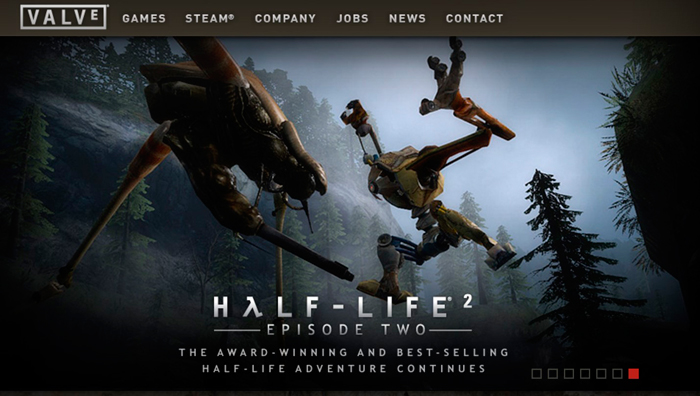
Image via Valve Software
SME, Valve Software[11], does this well – they have no managers, projects are started when an employee can group a team together, and performance management is conducted as peer review. As a result, Valve has experienced tremendous growth – something that would normally require rigidity to manage.
10. Make Your Employees Part of Your Brand Mission
Create an atmosphere where employees feel like they contribute to the outcome of your company or organisation. Environments where staff feel like they are part of something bigger than themselves have been constantly proven to be success-drivers. Results happen when everyone is invested.
So, how do you go about this? Our approach is to create a great brand and strategy communication from the top down. Internal communication should be tailored so that, no matter the structure of your company, each employee knows how they contribute to wider goals, and, most importantly, has a clear idea of what those wider goals are.
Including corporate social responsibility into part of your operations is a great way of tangibly showing both customers and employees that your company is committed to the greater good.
Relate: Brand CSR, The Business Case for Successful Branding and Social Good
Ice cream giant, Ben & Jerry’s, demonstrates that ethics are not just for the realms of small, niche enterprises by only using fair trade ingredients.[12] In strengthening their customer’s positive perception of them as a company, they increase employee morale, drive purchases, and ensure that their brand personality doesn’t fall into the trap of becoming disconnected with consumer’s needs.
Related: Personality Matters: Bringing Your Brand to Life to Grow Profits
11. Give your employees what they need
This is the proof point that your company is not just about placing that ping-pong table in the rec room. Showing employees that you value them and their lives as people, not just workers, vastly increases job satisfaction.
71% of staff at Goldman Sachs feel that they often or almost always receive great rewards, while 82% of American Express employees report that the company often or almost always provides needed training, fair promotions and personally challenging work.[13] While it’s not the glamorous, fun side of company brand culture, creating a base that ensures that your employees know they are valued through things such as child care, mentoring and health, can make a dramatic difference.
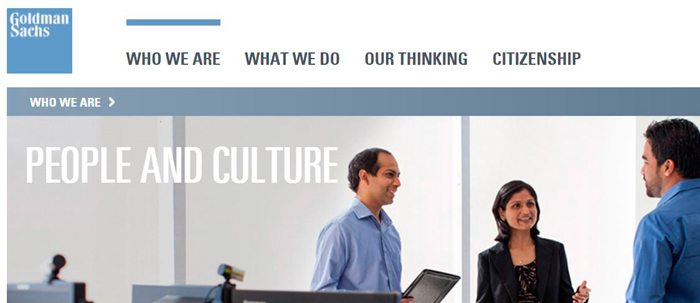
Image via Goldman Sachs
12. Create Autonomy
Career analyst, Dan Pink, has spent much of his own working career studying what it takes for employees to be motivated. It turns out, creating an environment where employees feel that they are the ‘masters of their own destiny’ is one of the most important aspects of employee happiness. This can be relatively easy to establish if the work is naturally project or campaign based, so thought should be given particularly to the roles where work is more constant and not as varied.
For instance, a Web Content Manager at an SME spends their day ensuring that the content is relevant, accurate and appropriate for the company. A company with a poor brand culture will treat this Content Manager as a worker, one who processes and publishes the team’s work, whereas a company with a great brand culture will instil autonomy in the Content Manager. They own the content space, feel comfortable providing advice and direction, and are looked to as the expert in that field. A small change, but one that makes a huge difference.
Related: Family Business Branding and The Secret Drivers to Brand Success
Brand culture integrates itself into every part of your company from the way customers perceive your company and trust you, which in turn has a massive impact on their likelihood to buy and become brand advocates, to your own employees’ sense of job satisfaction.
If you’re struggling to strongly develop your brand culture in order to improve your overall performance, growth and profitability, then a brand audit is a very useful tool to help you evaluate your areas of strength, weakness and potential innovation and growth.
Take a look at our brand audit programme called the Auditing Analysis Accelerator™. This online course takes you through all the key steps you need to consider in giving your brand a health check. It enables you to identify areas of strength, weakness and pinpoint new opportunities for innovation and growth. You can watch a free course preview here.

Audit your brand now so you can identify where and how to build your strong brand culture
Alternatively, if you’ve got a major challenge on your hands then perhaps a brand revitalization or refresh may be the most effective option to turn things around. Feel free to get in touch, we’d be delighted to help. Drop us a line to [email protected] or give us a call T: +353 1 8322724 (GMT hours 9:00-17:00).
Viewing your workplace as a mutually beneficial environment, one that adds value to both the employer, employee and customer is crucial to job satisfaction, role performance and customer satisfaction, which are what collectively drive growth and achieve strong commercial results.
There are so many ways that SMEs / SMBs can add value to their employees’ lives by providing them with the benefits and autonomy they need, to creating a fun and inviting environment that instils a sense of pride and appreciation. We can help you uncover and articulate your brand values, and most importantly, how to actually achieve them in your organisation in an authentic way that enhances your peoples’ lives while also increasing your profits.
Questions to consider
- Have you evaluated how you can improve your brand culture to attract and retain high performing talent so you can increase your brand awareness, market share and sales?
- When did you last give you brand a health check so you can identify areas of weakness, strength and where to innovate?
- Could you give some members of your team more autonomy to increase their motivation, performance and sense of fulfilment?
- Have you trained your staff and fully inducted them in what your brand stands for and what that means in a day-to-day actionable, living sense so you can improve their performance, brand alignment and the quality of the customer experience delivered?
- Is now the right time for a brand refresh so you can improve your brand culture, re-invigorate company morale and increase overall market impact and growth?
Want to refresh your brand but you’re not sure where to start to get a successful return on your investment?
Drop us a line or give us a call… we’re here to help!
If you want direction and support transforming your brand so it fully embraces changing trends and increases sales then the Persona Brand Building Blueprint™ Mastermind is the perfect fit for you.
This is a two-day brand building intensive shared with a small group of like-minded peers where you work on your brand with our leadership. In fact, over the two days, you reevaluate your brand, codify it and create your brand strategy from the ground up whether you’re revitalising an existing brand or creating a new one.
At the end of the two-day Persona Brand Building Blueprint™ Mastermind you leave with your fully documented brand strategy ready for implementation in your business or organisation.
If your team is larger and you’d like to include your full team’s participation in the Persona Brand Building Blueprint™ Mastermind then we also run in-house private client brand building intensive programmes too.
Ring us to discuss your brand building preferences
Just drop us a line to [email protected] or give us a call T: +353 1 8322724 (GMT 9:00 – 17:00) to discuss your preferences and we’ll develop your brand building intensive bespoke to your particular brand requirements so that you have your brand solution built to greatly enhance your brand culture and secure your future success.
[1] https://www.entrepreneur.com/article/238640
[2] https://www.forbes.com/sites/johnkotter/2011/02/10/does-corporate-culture-drive-financial-performance/#7fb4ea207e9e
[3] https://hbr.org/2010/09/brand-is-culture-culture-is-br
[4] https://hbr.org/2010/09/brand-is-culture-culture-is-br
[5] https://www.bloomberg.com/news/articles/2010-02-18/usaas-battle-plan
[6] https://hbr.org/2010/09/brand-is-culture-culture-is-br
[7] http://www.businessnewsdaily.com/5935-improve-company-culture.html
[8] http://www.telegraph.co.uk/sponsored/business/britains-healthiest-company/11848497/flexible-working-hours.html
[9] https://www.forbes.com/sites/williamarruda/2013/10/08/three-steps-for-transforming-employees-into-brand-ambassadors/#5f8f0e9e1040
[10] http://www.inc.com/ananya-bhattacharya/tony-hsieh-on-company-culture.html
[11] https://www.inc.com/david-burkus/how-this-company-runs-without-managers.html
[12] http://www.businessnewsdaily.com/4679-corporate-social-responsibility.html
[13] https://www.entrepreneur.com/article/245667
From Zero to Hero: How to Become a Must-Have Brand
/0 Comments/in Brand Differentiation, Brand Profiling & Positioning, Brand Strategy /by Lorraine CarterApple did it. Starbucks did it, too. And so did Barbie dolls by Mattel. If you’re wondering how these items scaled from new idea to nice-to-have to must-have hero brands, let Steve Jobs explain: “Customers don’t know what they want until we’ve shown them.”[1]
Is it really as easy as the Apple genius makes it sound for a brand to carve out its space as a necessity in the consumer’s mind? As we can see, there is no prescribed area for items such as smartphones, lattes, and plastic fashion dolls in Maslow’s hierarchy of needs as described in “A Theory of Human Motivation.”[2]
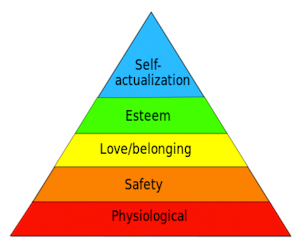
Image via Wikipedia
Are there any guideposts along the way for a brand to follow on its journey to must-have hero brand status? What steps can a brand take to go in the right direction?
Strategic Brand Foundations for Hero Brands
Of course, every business has some sort of a brand, good or bad, whether it’s generically commoditized and barely surviving or a profit powerhouse hero brand. Branding is not just for global giants. It’s equally important for local enterprises, too. Although resources may be thinner on the ground, the business of creating a successful brand cannot be over emphasised and it’s doable even on more modest budgets. But it does take time, consistent application, expertise, and experience.
Before taking that very first step, several strong, well-thought out, basic brand foundations must be in place:
- Your Brand Values
- Your Brand Purpose
- Your Brand Positioning
- Your Brand Promise
- Your Brand Personality
- Your Brand Delivery Experience
When these branding essentials are lacking, it’s rather like going on a road trip without a map…and a leaky petrol tank as well. Got it? Let’s get the car started.
6 Steps To Go from Zero to Hero Brand
Create a Brand with Differentiation
Step One: Start your engines! Building a brand that has the X factor — something unique — is like putting the key in the ignition. In order to start the engine, you need to set your brand apart in some way that provides a benefit to the potential customer. Otherwise, there’s simply no spark.
One or more points of brand differentiation can revolve around the product, design, price point, distribution, social conscience, even its compelling brand story. In a small-to-medium sized business, brand differentiation is even more important, as without it there’s no chance to be noticed on a larger playing field.
Related: Brand Stories – 5 Compelling Examples That Sell Themselves (part 1 of 2)
Once you’ve set your brand apart, its personality can shine through. If your brand is lacking in personality, a brand audit is a business tool that will enable you to bring it sharply into focus because it is a process that identifies areas of strength, weakness and opportunities for innovation and growth. You can give your brand a health check using our Auditing Analysis Accelerator™ system. Find our more about it here.
Related: Personality Matters, Bring Your Brand to Life to Grow Your Profits
For examples, think of the automobile makes and models you love best. Whether sporty, racy, or utilitarian, a car choice oozes in personality that in turn, reflects on its owner. All brands have the capacity to achieve this as succinctly as seen here:
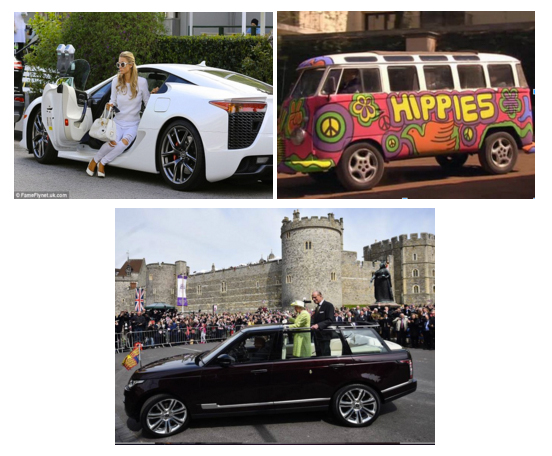
Images via Pinterest, Topito.com, abcnews
Step Two: You’re in the driver’s seat. To decide which way you’re going to steer, determine what core values your hero brand stands for. Your brand’s core values are unwavering, fundamental beliefs reflected in your mission, management, employees, practices, and customer relations.
Embrace your brand’s True North with a well-defined set of values that can actually increase the value of your brand. Compare no name jeans to a designer label (a label which cannot always be seen) and determine what accounts for the difference. Whether pricey or a bargain basement deal, a good brand projects the same thing: that it creates more value than it costs.
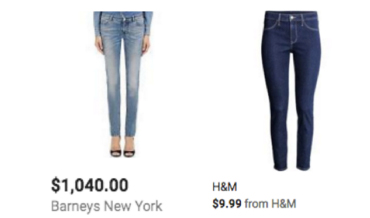
Example: Glamour Closet is a small retail business with one shop in each of four major US cities. They stock nearly new showroom, runway, overstock, and sample designer name bridal gowns at 35 to 75 percent lower than retail, because every bride wants the best, but not every bride has the budget. Unlike most showrooms from which these high-end gowns are sourced, no appointment is necessary and photos are permitted, adding to Glamour Closet’s differentiation.
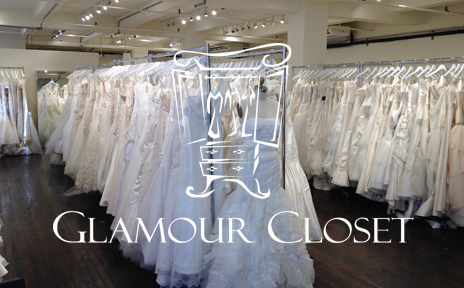
Image via Glamour Closet
The family-run business has a tagline: “Quality. Trust. Community.” They have a strong CSR strategy where a portion of profits are donated to foundations dedicated to finding a cure for Parkinson’s, arising from the owner’s personal family story touched by this disease.[3]
Related: Brand CSR, The Business Case for Successful Branding and Social Good
Build a Brand Promise
Step Three: Commit to a path. Create your brand promise and live it every day. In return, your employees will deliver on it.
Example: The City of Rancho Cordova, California has 69 employees, which it runs like a small business. Every other week, staff get to present suggestions for new programs and improved processes to a five-member advisory team in the “office of new ideas.” Brainstorming sessions select the best ideas for implementation involving the employees.
Related: Brand Promises, How to Craft, Articulate and Live Them for Brand Success
Twice a week, lunchtime in the gym is extended by 30 minutes for well-being exercise sessions with colleagues. A tablet is offered to any employee demonstrating three ways that using one can increase his/her productivity, including flexihours. The Employee Activities Team helps coordinate numerous 40-plus charitable events throughout the year.
Rancho Cordova promises to the community of 65,000 and its employees that public service doesn’t have to mean sacrificing best practices and innovative culture of private enterprise. The local government attracts an average of 140 applicants per job.[4]

Images via Rancho Cordova
Deliver Your Brand Experience
Step Four: Get to know your passengers. Small business owners realise that connection is critical because the customer experience is paramount to maintaining, nurturing, and growing the brand. Gary Erickson, CEO of Clif Bar & Co. exemplifies zero-to-hero in turning his homemade energy bar into a $100 million phenomenon with an emphasis on outdoor adventures.

Family and employee-owned, this has become one of America’s fastest-growing private companies with an estimated 35 million customers. These customers feel good about buying into the Clif Bar sustainability mission, “Think Like a Tree.”[5]
Related: Family Business Branding and The Secret Drivers to Brand Success
In his book, “Raising the Bar,” Erickson gives the reader compelling personal stories about trekking in the Himalayas, climbing in the Sierra Nevadas, and biking through Europe as inspiration for his philosophy of business: honesty, humour, and integrity. He aims to convince readers that supporting employees in their work, goals, and endeavours has a positive knock-on effect for the community and the environment.

Image via Clifbar
Happy employees are happy to keep your brand promise to your customers by wanting to deliver it, says Erickson.
Identify Your Brand Touchpoints
Step Five: Use your front, side and rear view mirrors. Successful brands don’t overlook any “moment of truth” as seen through the eyes of the customer. The goal? “To create a highly adaptive customer experience that consistently delivers an extraordinary experience for the customer,” says one chief strategy officer.[6]
Related: Top 10 Brands for Customer Experience and What You Can Learn From Them
Example: In Nottingham, UK, the Restaurant Sat Bains With Rooms is independent, chef-owned, and completely different. In an unglamorous location near a motorway flyover, Chef Sat has managed to create a brand that is considered one of the world’s most innovative, earning him two Michelin stars. Only 7- and 10-course dinners are served, with specially designed tabletop cutlery holders so guests are not interrupted with constant silverware replacement by servers. And, because diners travel for the experience, eight deluxe guest bedrooms are situated on the premises.
This infographic map demonstrates chef’s understanding that the guest journey begins with touch points beyond food and drink, such as the reservation and the car park.
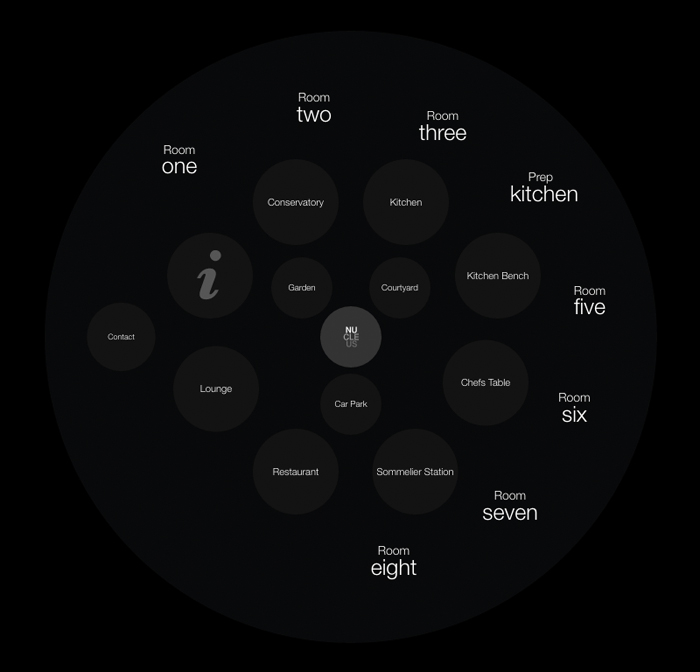
Image via www.restaurantsatbains.com
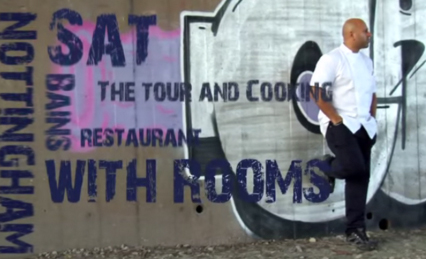
Image via www.restaurantsatbains.com
Strategize Your Brand Communications
Step Six: Keep your eyes on the road. When your external and internal brand communications are consistent across all media, properly planned and executed, there’s no need to text and drive.
Your brand tone-of-voice is authentic and humanised, it speaks to your target audience, it represents the brand personality and connects customers to your brand, successfully creating the reaction you’re looking for.
Related: How to Develop Your Brand Tone of Voice to Increase Sales
Example: In Seattle, home of the famous Pike Market with its iconic sign and fishmongers known for tossing fish to one another across their stalls, Virgin America got their message across on social media using humour. Here’s how they let customers know that they can expect power outlets at each seat on the airline.
Related: Brand Strategy, 6 Tips for Building Your Proft Growth Plan
How do small companies get big? As an SME / SMB, business owners can stay nimble, exercising a greater ability to manoeuvre twists and turns on the road to successful brand growth. With timely MOTs or NCTs (that’s an annual vehicle checkup for our American friends) from branding professionals in the form of a brand audit health check, the brand you’re driving can make it successfully across the finish line first, and consistently stay ahead of the competition.
Related: Use Humour in Branding to Create Strong Emotional Bonds so You Increase Sales
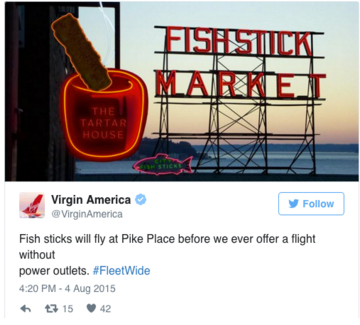
Image via Twitter
And the good news, if you want to get your brand roadmap on track …we’re here to help!
If you want direction and support transforming your brand so it fully embraces changing trends and increases sales then the Persona Brand Building Blueprint™ Mastermind is the perfect fit for you.
This is a two-day brand building intensive shared with a small group of like-minded peers where you work on your brand with our leadership. In fact, over the two days, you re-evaluate your brand, codify it and create your brand strategy from the ground up whether you’re revitalising an existing brand or creating a new one.
At the end of the two-day Persona Brand Building Blueprint™ Mastermind you leave with your fully documented brand strategy ready for implementation in your business or organisation.
If your team is larger and you’d like to include everyone’s’ participation in the Persona Brand Building Blueprint™ Mastermind then we also run in-house private client brand building intensive programmes too. Just drop us a line to [email protected] or give us a call T: +353 1 8322724 (GMT 9:00 – 17:00) to discuss your preferences and we’ll develop your brand building intensive bespoke to your particular brand requirements.
Alternatively, if you want in-person professional direction to build your brand and would like to explore working with us then drop us a line to [email protected] or give us a call T: +353 1 8322724 (GMT). We’d be delighted to talk with you.
Want to do-it-yourself and build your own brand road map, then we also have a solution for you to with our online ‘How to Build a Brand’ eCourse called the Personality Profile Performer™ online programme which is also now part of ‘The Economist Group” platform. You can find out more here and you can watch a free course preview here.
Questions to Ask Yourself About Your Brand Growth and Success
1. Have I laid strong foundations in place for my brand?
2. Have I shared my brand values with all stakeholders, including employees?
3. Have I performed regular brand audits to ensure that I’ve not veered off course in my brand’s direction and objectives?
4. Alternatively, does that brand direction require a refresh, due to changed circumstances?
5. Have I reviewed my customer touch points and ensured these align with brand values at every intersection?
6. Have I developed an engaging personality for my brand and a consistent message with an appropriate tone of voice?
[1] Walter Isaacson, “Steve Jobs,” Simon & Schuster, 2011
[2] http://psychclassics.yorku.ca/Maslow/motivation.htm
[3] http://glamourcloset.com/closet/html/Glamour%20Closet%20In%20Support%20of%20A%20Cure%20for%20Parkinsons.pdf
[4] http://reviews.greatplacetowork.com/city-of-rancho-cordova
[5] http://www.clifbar.com/article/think-like-a-tree
[6] http://www.mycustomer.com/community/blogs/jeff-hassemer/time-to-burn-the-customer-journey-map
Personal Branding: We Are All CEOs (Part 2)
/0 Comments/in Brand Profiling & Positioning, Brand Reputation, Brand Strategy, Branding, Personal Branding /by Lorraine CarterIn the second of a two-part post, we take a look at identifying your personal brand and maintaining it…and why personal branding no longer important just for celebrities or VIPs anymore.
To reinforce the message of this article Part 1, we reiterate: Everyone has a personal brand, whether they like it or not. To get the right personal brand so you can;
- Align yourself more effectively with your corporate brand
- Leverage yourself as an industry leader
- Mitigate risk in your business
- Get paid what you deserve!
- Manage your reputation
- Accelerate your career
- Get headhunted
you must map it out, create it to your liking, develop it and then nurture it.
Personal Branding – When the Brand is You
When Does Personal Branding Begin?
Good question. Actually, you’re never too young to begin personal branding. In our example from Part 1 of this article, we introduced Ryan. Ryan is 5 years old, has nearly 8 million subscribers, is the top money maker on YouTube, and is currently attracting more than $1 million per month from advertisers on his channel, Ryan ToysReview.

Image via Ryan’s Toy Review – YouTube
Fair enough, Ryan has built spectacular audience numbers for his personal brand over a two year period. Having said that, it does mean he got started at age 3!
Related: Personal Branding: We Are All CEOs (Part 1)
Some of the biggest YouTube celebrities are super young and successful. If you’re fine with being just a little bit jealous, check out these 13 pint-sized millionaires covered in a 2014 feature in Business Insider.[1]

ZayZay and Jojo, 5 and 7, are huge on YouTube with millions of subscribers and views of their videos
However, personal branding isn’t just about one’s social media presence and a sales channel. So many early life choices about ourselves — our preferences in clothing, grooming, friendship circles, sports, hobbies — are actually branding at work as we mature and learn about ourselves.
In his TEDx talk at the University of California at Berkeley, Tai Tran talks about his personal journey from “zero to infinity.” Born in Vietnam to street vendors, new to the USA at age 6, he explains the why of building a personal brand — that it’s not what you know, it’s who you know by growing your network — and how to achieve your goals.
School Leavers Personal Branding: Your Personal Statement, Your CV, Your Network
In our final year of secondary school, we’re made keenly aware that a whole new world awaits. Whether it’s crafting a personal statement for a university application or writing a CV for employment or volunteerism, we are already putting a stamp on a personal brand.
A network of peers and mentors further defines your personal brand. By the time you’re preparing to leave school, you are expected to have gathered some reliable references who are happy to testify to that unique brand which is you.
Finding the Personal Brand at Your Core
Two popular 20th-century theories, Myers-Briggs and The Colour Code, both related to personality types have been widely embraced by individuals, educational concerns, and employers for several decades. There’s still some relevance in both these last century approaches so these exercises may help you determine your personal brand.
Related: Personality Matters, Bring Your Brand to Life to Grow Your Profits
Introduced in 1962, the Myers-Briggs Type Indicator® identifies and describes 16 distinctive personality types based on preferences posed by 93 questions such as these.[2]
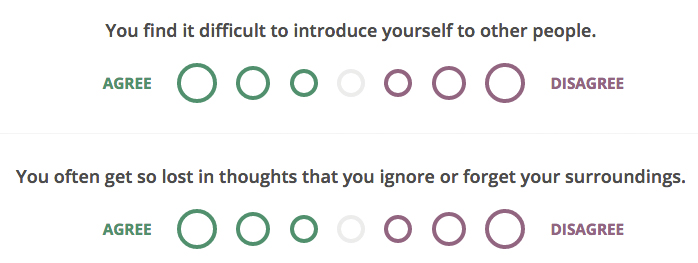
Image via myersbriggs.com
Personality type combinations derive from your tendencies, as follows.
Favourite world: Do you prefer to focus on the outer world or on your own inner world? This is called Extraversion (E) or Introversion (I).
Information: Do you prefer to focus on the basic information you take in or do you prefer to interpret and add meaning? This is called Sensing (S) or Intuition (N).
Decisions: When making decisions, do you prefer to first look at logic and consistency or first look at the people and special circumstances? This is called Thinking (T) or Feeling (F).
Structure: In dealing with the outside world, do you prefer to get things decided or do you prefer to stay open to new information and options? This is called Judging (J) or Perceiving (P).
These possible personality type combinations derive from your gut-reaction answers:[3] When you decide on your preference in each question, you have your own personality type, which can be expressed in four letters.
Back in 1987, Dr. Taylor Hartman created The Colour Code Personality Profile,[4] based on the principle of four key personalities, which he then organised into colour groups for ease of identification.
REDS
Need to look good technically, be right, and be respected. They are strong leaders and love challenges.
BLUES
Need to have integrity and be appreciated. They are focused on quality and creating strong relationships.
WHITES
Need to be accepted and treated with kindness. They are logical, objective, and tolerant of others.
YELLOWS
Need to be noticed and have fun. They love life, social connections, and being positive and spontaneous.
Reds
Reds are motivated by power. They are decisive and assertive. They’re planners. Problem solvers, adventurous and restless, planning for what’s going to be happening in the future. They are also great at solving problems and fixing situations. Reds are natural born leaders.
> Examples: Mark Zuckerberg, Angelina Jolie, Lebron James
Blues
Blues are driven by connecting and building relationships. They can be rather controlling in wishing to ensure everyone else is connected also, creating a potential clash with reds who don’t want to be controlled. Blues are people pleasers who can take critical feedback if it means being a more likable person. Blues are loyal; they remember names, dates and events.
> Examples: Oprah Winfrey, Mel Gibson in “Braveheart,” Forrest Gump character
Whites
People whose core colour is white are driven by peace – they really just want to get along but are often misunderstood. They are logical, passive, accepting, truthful, and tolerant. They may need to be asked for an opinion think and will frequently come up with amazing ideas when prodded a bit. Whites can are happy to work independently and avoid confrontations.
> Examples: John Lennon, Mahatma Gandhi, Dr. Martin Luther King, Jr.
Yellows
Yellows are the fun lovers, optimistic, spontaneous social butterflies. They’re carefree and enjoying the moment. Yellows let baggage go, they can easily erase things and move on. They are very curious people, like to learn new things and ask a lot of questions. Yellow have magnetic charisma.
> Examples: Ellen deGeneres, Will Smith, the Genie in Disney’s “Aladdin”
Dr. Hartman’s theory is supported by a 45-question free quiz, found here, intended to help you identify your personal brand.
Different Types of Offline Personal Brands
Your personal branding begins with your name. Although choosing your birth name wasn’t your decision, so much of your personal brand — how you appear to the world — is completely within your control.
These are a few examples of highly effective “types” you may model yourself on.[5] You may encompass one or more of them…indeed, the rare individual has something from all of these types.
As George Bernard Shaw said, “Life isn’t about finding yourself. Life is about creating yourself.”
- Youthful Excitement: You are daring, spirited, imaginative and up-to-date
- Authenticity: You are honest, genuine and cheerful
- Confident: You are tough, strong, outdoorsy and rugged
- Competence: You are reliable, responsible, dependable and efficient
- Elegant Sophistication: You are worldly, cultured, charming and glamorous
- Unique Persona: You are meticulous, independent, fearless and Persistent
- Zen Master: You are conscientious, observant, intelligent and humble
Different Types of Online Personal Brands
Faced with the prospect of online personal branding, some people protest, “Hey, I’m just a regular person!” No worries, that’s a type of personal brand, too.
Still, others say, “I don’t go online that much.” Neither good nor bad, such a behavioural choice also reflects your personal brand, frankly.
Take a look at these seven basic types of online personal brand[6] to determine where you fit.
1. The Content Creator
You’ve got talent. Whether your platform is YouTube, Instagram, Medium, your own blog or something else, you are known for producing terrific original content.
2. The Curator
Just like a museum curator, you assemble a collection of interesting stuff and share it widely. People follow you because you’ve got your finger on the pulse, even if you’re not the creator.
3. The Journalist
You can analyse and interpret without passing judgement. You’re part content creator and part content curator. You provide fact-based commentary and are a reliable voice; a go-to news source for your market or niche.
4. The Instigator / Critic
You play devil’s advocate and raise questions when other people don’t think to consider an alternative angle. You’re able to spark meaningful debate in your industry.
5. The Case Study
You’re the first to try things, an early adopter. People come to you as a good source to find out what works, what doesn’t, and why because they figure you’ve tested it.
6. The “Regular Person”
You let your personality shine through and it comes across as likable, genuine and authentic, even if you don’t consider your extraordinary in any particular field. Your brand is entirely built off you just being you.
7. The Industry Expert
You know your stuff inside and out. You’re widely considered a true professional in your niche and people turn to you for top notch advice.
Big or Small, Personal Brands Benefit From Care and Attention
Sure, life throws curve balls. But at the end of the day, you are the one responsible for making or breaking your own personal brand. No fabulous trophies or championship prize monies can do that on your behalf.
Related: Brand Sponsorships: The Best Ambassadors Are Already On Your Payroll
Tiger Woods: One of the world’s most successful golfers, a highly paid athlete and brand ambassador, has seen his brand fizzle under his own stewardship.
Related: Brand Crisis – How to Manage, Survive and Thrive
Case Study: Executive Chef Matthew Dolan
Executive Chef Matthew Dolan started working in kitchens as a dishwasher and a fry cook at age 14. In June 2016, his own top-class restaurant, 25 Lusk, was selected to host President Obama for a business leaders dinner in San Francisco.
Although Dolan humbly says, “I am a cook,” there’s a great deal more to it. Watch as Chef Dolan mentors Thunder, a former criminal, as a chef-in-training apprentice, changing the young man’s life in the process. The astute viewer observes that two personal brands are being shaped here.
Maintaining Your Personal Brand
It’s instilled in us from an early age that first impressions count and that we must maintain a good reputation. This applies to both online and offline interactions. Your personal brand is defined by your reputation, including other people’s perceptions of you, in everything you do, everyone you meet, everywhere to go.
If you want some direction mapping our your personal brand then take a look at our brand building programme called the Personality Profile Performer™. This online course takes you through all the key steps you need to consider in building your brand. You can watch a free course preview here.
Alternatively, if you want in-person professional direction and expert consulting support to build your brand and would like to discuss working with us then drop us a line to [email protected] or give us a call T: +353 1 8322724 (GMT hours 9:00-17:00). We’d be delighted to talk with you.
Controlling your personal brand must include awareness of your internet-based reputation. The management of your personal brand includes proper exposure across all internet “real estate.” Your professional website, social media profiles, photos, and published content should all reflect the brand promise you want to deliver.
Related: Brand Promises: How to Craft, Articulate and Live Them for Brand Success
Top 7 Tips for Developing and Maintaining Your Personal Brand
Fundamental to the process is your decision about exactly how you want to manage your social media outlets. Do you prefer to isolate Facebook for purely social reasons and use LinkedIn for your professional life? What about Instagram, Twitter, Snapchat, YouTube and more?
- Photo: Ditch the sunglasses. Don’t use blurry images. Invest in a headshot that’s professional enough for your website and for LinkedIn A more relaxed profile image is appropriate for Facebook and other social media platforms whereas LinkedIn requires a more professional and groomed image — ladies don’t wear off-the-shoulder numbers on LinkedIn because it looks like you’re naked (unless that’s congruent with your personal and professional brand!) Pay attention to cover photo choices as well.
- Profile: Craft an elevator pitch. Make it brief enough for Twitter or for shaking hands in person when you’re asked: “What do you do?” It is intended to support your personal brand and strengthen your brand recognition. Write a succinct and compelling personal biography.
- Position: State your position. Reflect a personal brand philosophy that’s well defined and consistent in every piece of content that appears in connection with your name.
- Website: Build a quality website. It’s one of the first places you’ll be discovered online. Keep it vibrant, up-to-date, interesting and a positive reflection of your personal brand.
- Business cards: Ensure it’s consistent in messaging, language and design style with your other online assets, both social media profiles and website. Offer yours. It goes with a handshake, smile, and a look in the eyes. Even in the digital age, people still use business cards and yours should reflect your personal brand. It’s worth the extra effort and shows considered thought and preparation.
- Privacy: Stay secure. Double check your privacy settings on all platforms. The default may be to share with everyone, including those you are not connected with, and this may not be your preference. Best advice: Don’t post anything you’ll regret, especially as online privacy settings are frequently changing and old posts aren’t easy to cleanse.
- Network: Don’t hide. Make valuable connections. Join groups online and offline that reflect your interests and provide the right opportunities for supporting your personal brand and making connections within your niche.
Related: CEO Brand Leadership: How Vision Drives Brand Growth
Question to consider…
Is your personal brand the best it can be? Ask yourself the following six questions so you can evaluate, identify, develop and maintain your personal brand more effectively:
- If your personal brand isn’t altogether clear to you, how can you make it clear to others?
- How could you benefit from assistance in creating a personal brand?
- Is your personal brand consistent across all platforms, both online and offline?
- Have you set objectives for your personal brand?
- How confident are you that your personal brand will achieve its objectives?
- Does your personal brand need a health check?
[1] http://www.businessinsider.com/these-9-young-youtube-stars-are-all-becoming-household-names-2014-10
[2] http://www.myersbriggs.org/my-mbti-personality-type/mbti-basics
[3] MBTI® Manual: A Guide to the Development and Use of the Myers-Briggs Type Indicator®
[4] https://www.colorcode.com/choose_personality_test
[5] https://www.linkedin.com/pulse/20140602153641-73005678-the-seven-types-of-highly-effective-personal-brands
[6] https://www.inc.com/nicolas-cole/there-are-7-different-personal-brand-archetypes-which-one-are-you.html
How to Develop Your Brand Tone of Voice to Increase Sales
/0 Comments/in Brand Personality, Brand Profiling & Positioning, Brand Tone of Voice, Brand Voice, Branding, Communication /by Lorraine CarterBring to mind someone you love and know well. When they announce happy news, how do they do it?
It may be because of their personal brand type they give you the message as they bound into your home, all high-energy and dramatic, practically jumping up and down until you take the bait and ask them what they have to say. Or it could be they wait with calm, measured control until dinner is served, the family gathered at the table, before they quietly tell their news.
All people are different.
Each of us, according to our personality, convey messages differently. And it’s the same for brands and businesses. Each has it’s own personality and each delivers messages with a specific brand tone of voice.
The world’s best, most loved brands are those who have mastered brand tone of voice. The company’s personality shines through and it delivers messages in a tone that resonates with a specific group of people; their target audience.
In this article, we’ll take a look at what brand tone of voice is, how to develop it, and examples of companies who lead the way. A strong brand, with a strong tone of voice, will overtake its competitors and attract the right target audience. The result for the brand owner is increased sales.
What Is Brand Tone of Voice?
A brand’s voice is the personality it conveys, and which shines through in all it communicates. A brand’s tone of voice, is how the message is said. Online, brand tone of voice is the attitude of your content.
Right now, your brand already has a voice, as well as a tone of voice. The big question is this: what does your brand voice convey to your target audience?
For instance, does your brand say, “Thank you, Jeff!” or does it say, “Thanks, Jeff.”?
Things to consider for conveying tone of voice:
- Is your brand more formal or casual?
- On social media and in emails, do you use slang or emoticons?
- Do you make up your own words, like “peeps” for “people”, or “delish” for “delicious”?
- How does your brand use punctuation?
- Do you use humour and if so, how?
Once you decide on the tone of voice you want to convey, through the brand profiling process, you need to do it consistently. If you have a team of people working with you, it can be especially difficult to keep your branding elements consistent.
In fact you will need to develop a brand style guide so you can manage and protect your valuable brand assets effectively. A comprehensive brand style guide will also help you avoid unintentional brand self sabotage or the dilution of your brand. In truth a brand can never have major impact or become very strong unless it is intentionally developed, managed and controlled using brand profiling and brand guidelines.
One company that does an exceptional job with their brand tone of voice is Mailchimp, an online email marketing and automation platform. To keep their brand consistent, they created a comprehensive style guide[1]:
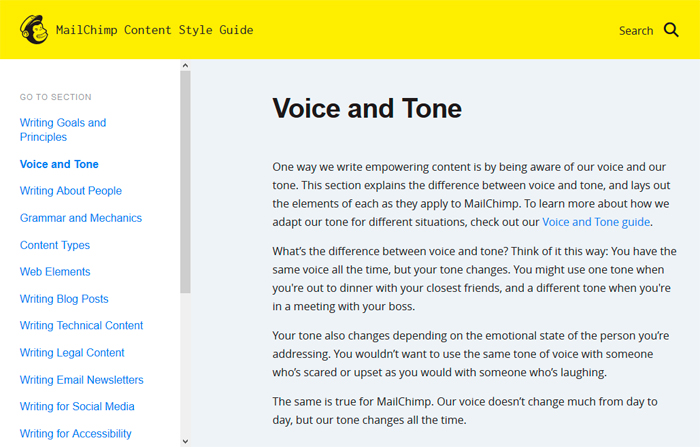
Image via MailChimp
Have a look at a screenshot of their YouTube videos – you can see just by the video images on their channel page, that their brand style guide works beautifully to keep their branding consistent:
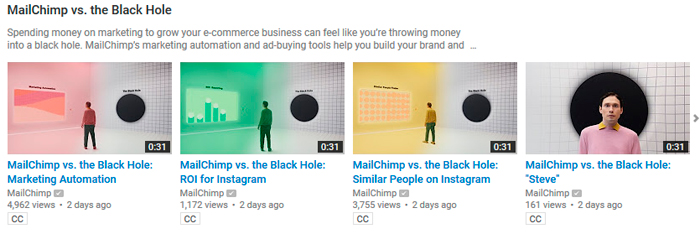
Image via MailChimp
Watch one of Mailchimp’s videos to get their full brand tone of voice experience:
What is your brand tone of voice telling people about who you are, and does it resonate with your target audience?
Related: Use Humour in Branding to Create Strong Emotional Bonds so You Increase Sales
Your Brand Tone of Voice Must Speak to Your Target Customer
Every business – including B2B’s – sell to people. It’s the people in companies who make decisions. The solutions you provide cater to a certain group of people or companies.
Before your business builds a branding strategy, it would need to create purchaser personas, fictional characters who embody and fully represent your ideal customer.
All branding should be built on the target customer at its core because you can’t effectively sell to people you don’t understand. You have to speak their language: what keeps them up at night? What are the problems they have that you can solve? What do they love? And so on.
Every business has a minimum of between two to twenty different ‘Purchase Personas’ so it’s essential you identify and map out each of your different customer types because you need to understand your target audience; their needs, wants, loves, hates and aspirations intimately, in order to maximize your brand strategy impact.
In fact, this exercise is one of the key elements in our brand building programme called the Personality Profile Performer™. As you map out each of your different customer types using the ‘Purchaser Personas’ system, the outputs provide the critical insights and direction for how your brand tone of voice is built to speak to your customers on their terms so they find your message compelling — winning their hearts and minds on their terms — so you can grow your business. The course also takes you through all the critical steps you need to build your brand tone of voice. You can watch a free course preview here.
Alternatively if you want in-person professional direction and expert consulting support to build your brand and would like to discuss working with us then drop us a line to [email protected] or give us a call T: +353 1 8322724 (GMT hours 9:00-17:00). We’d be thrilled to chat with you.
The Ritz-Carlton Hotel[2] is a case in point. In 2015, they launched their new brand voice; their goal being to create a refreshed, relevant voice that firmly positioned the hotel in the luxury top tier.
Related: Luxury Branding: How to Establish or Re-Position Your High-End Brand
To this effect, they used consumer insights on their target audience, getting feedback from more than 3000 “luxury” customers around the world.
Video via: Ritz-Carlton Hotel
Is your brand tone of voice resonating with your target audience?
Related: Brand Voice: Differentiating Through Your Own Brand Language and Attitude
Brand Tone of Voice and Word Style
Words impact your brand’s tone of voice, message style and personality in every single piece of communication, whether offline or online, whether it’s your HR department putting recruitment adverts in newspapers, the emails your employees send out, mobile text messages, frontline call centre language and phone scripts, social media responses, flyers, business cards, blog articles and so on.
Everything the public can see about your business is a message you’re sending out.
This message can either help or harm your reputation, so it has to be carefully crafted.
Related: Brand Crisis – How to Manage, Survive and Thrive
A brilliant example of brand word styles is provided by Donald Trump in his fight for presidency in 2016. In this next video, we take a look at the difference between the Donald Trump and the Russell Brand brands.
While Trump uses small, common, simple words, Brand uses uncommon, more complicated, sophisticated words. The way they speak is not by accident, but rather by design. Trump understands that shorter, simpler words are understood by a larger number of people while longer, less common words may carry more precision to a specific audience profile:
Video by Charisma on Command
Now unlike Donald Trump who made his billions long before he became the US president, Pat Flynn[3] is a well-known and respected online marketer who started his business ventures from nothing. In fact, in 2008 he was laid off from his job and forced to make a living doing something he knew nothing about: online marketing.
Related: What Brands Can Learn From Political Campaigns
In a world of sometimes less than honourable, online scams, Flynn brands himself as an ethical marketer. As such, he is open about his family and his life. To back up his “ethical-ity”, on the home page of his website, he’s given prominence to his monthly earnings. When the visitor clicks on it, they can choose to view monthly income reports.
Image via Smart Passive Income
Watch for the words and tone of voice Flynn uses in one of his videos:
Video by: Smart Passive Income
Flynn portrays himself as a humble, transparent family man who cares about his customers and visitors alike, whose principled and who can be trusted. This ultimately leads to increased sales; that’s the power of his brand’s tone of voice.
Whether your business is small, medium or a large conglomerate, your brand is sending out messages via the words it uses and how it behaves through its personality.
Brand Tone of Voice in Social Media
If your brand is participating on social media platforms, you are sending out messages to the public at large, and to potential prospects.
Unfortunately, because social media marketing is still in its relative infancy, many businesses just don’t get it right, and small to medium sized companies have a real struggle to understand and use social media to optimize their earnings.
But one small company has mastered social media tone of voice, and that is MOZ, an SEO consulting company with a staff complement of less than 150.
MOZ has a heavy online presence and is beloved by the SEO community. Why? The content they produce is clever, bright and fun. SEO being a very complex and sometimes technical topic, part of their brand standard is to make information simple to understand, even for the complete newbie.
In the MOZ style guide[4], they are specific about their brand tone of voice, and it is reflected in all the content they produce, whether published on their website, or uploaded to social media:
MOZ is clear about their brand tone of voice, and it is reflected in all their content.
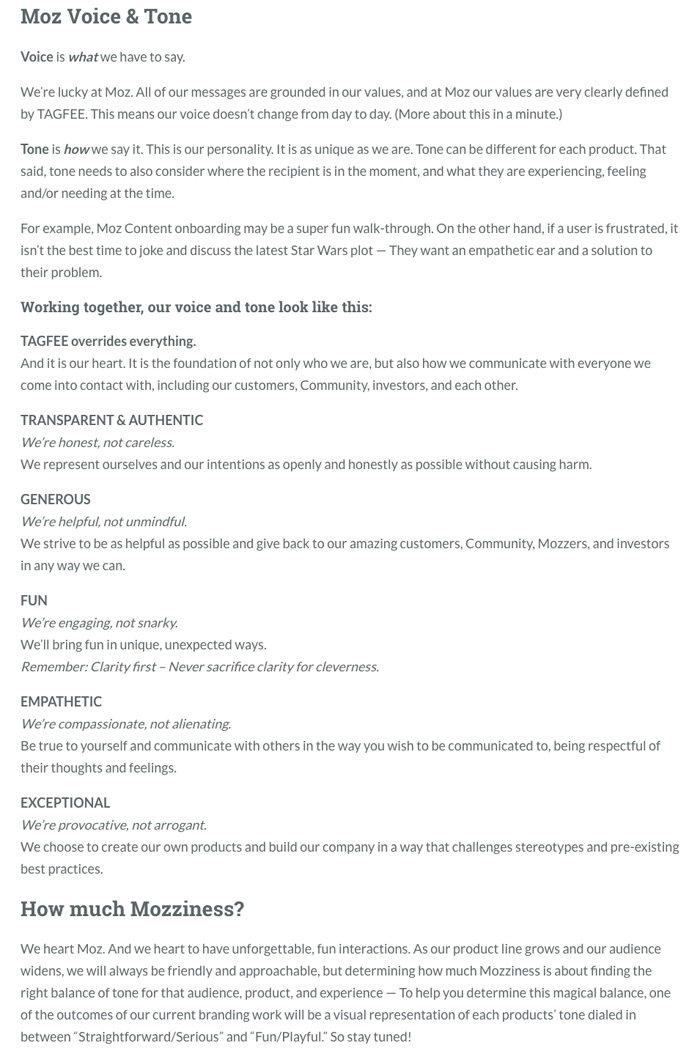
Image via Moz
Related: Personality Matters, Bring Your Brand to Life to Grow Your Profits
In the next example, you can see the MOZ brand tone of voice in action on their Facebook page:
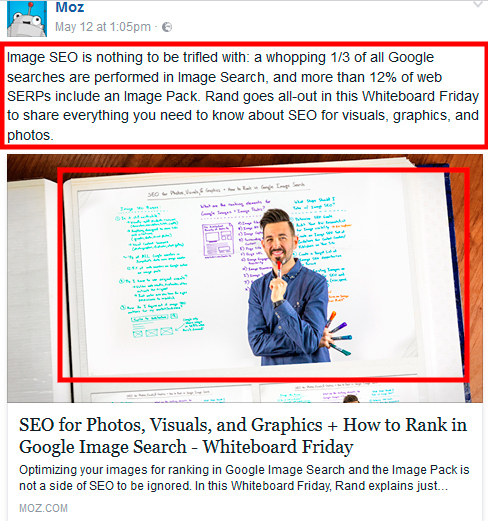
Image via MOZ Facebook page
Each blog post they upload as a Facebook status, includes a helpful summary, and the images they create are customized, fun and eye catching:
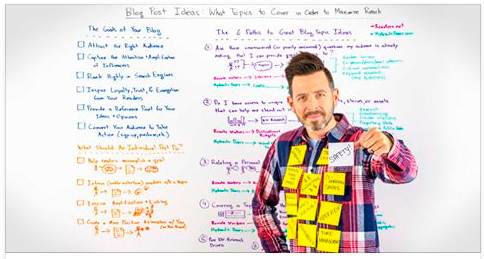
Image via MOZ Facebook page
All the images MOZ uses for their content are specially designed and eye catching, like this one.
No matter how much interaction you currently create on social media, brand tone of voice is essential to convey the right message, to the specific group of people you are targeting — your ideal ‘Purchaser Personas’ — if you want to increase your sales.
Related: Social Branding: The New Rules for Brand Success on Social Media
Summary
Your brand’s tone of voice acts like a magnet to attract the right people, your ideal customers, so you can increase your sales.
To be effective, your brand voice needs to speak to your specific target audience, not to everybody. Words play a huge part in brand personality, and your word style needs to be carefully constructed using brand profiling and then rolled out through the company as part of your brand strategy with absolute consistency. Remember consistency engenders trust and people, customers, only buy from people — brands they know, like and trust.
Your brand tone style guide needs to include social media content and the formulation of responses to messages.
Questions To Consider in Your Brand Tone of Voice
- What is your current tone of voice conveying to customers and prospects?
- What does your tone of voice say about what you stand for and who you are?
- Do you need to re-evaluate your brand tone of voice or perhaps give it a brand refresh?
- Does your tone of voice resonate with the people who matter most; your ideal target customers?

Does your brand tone of voice need a health check? Start your brand audit here.
Related: Rebranding: 15 Do’s and Don’ts for Brand Success
[1] http://styleguide.mailchimp.com/voice-and-tone/
[2] http://www.ritzcarlton.com/
[3] https://www.smartpassiveincome.com/about/
[4] https://ux.moz.com/guides/voice-tone/
About
Persona Branding & Design Consultants
Contact: Lorraine Carter
T: +353 1 832 2724
Carra House
Howth, Co. Dublin, Ireland
Copyright © 2007-2022 All rights reserved.
Persona Design Consultants Ltd.
Registered in Ireland: No. 201997
Member of



